
Article Summary: Georgia Landmarks
Georgia Landmarks. More Than Just Parks has 25 incredible must-see sites for you to visit.
There’s so much more to this exciting place than the Georgia Bulldogs. In this article, we’ll familiarize you with the incredible landmarks located in the Peach State.
We’ve got incredible places, iconic memorials, fascinating museums, epic monuments and so much more.
We’re going to give you our list of the Top 25 Landmarks In Georgia.
So, What Is A Landmark?
Well, it’s a place of “a special character or special historical or aesthetic interest or value as part of the development, heritage, or cultural characteristics of a city, state, or nation.”
Why visit these places? Because landmarks connect us to the past. Through visiting these wonderful places where history occurred we find our roots. It allows us to feel like we are a part of something much bigger than ourselves.
And, speaking of history, did I mention that I taught the subject? I spent a lifetime teaching about the history behind many of these amazing sites. Then I got to see them firsthand. And now I’m sharing the fascinating stories of these places with you. It doesn’t get any better than that!
So, without further ado, let’s dive in.
Table Of Contents
Table of Contents: Georgia Landmarks
Georgia Landmarks
Some Fascinating Facts About Georgia
Here are some fascinating facts about Georgia:
- Georgia is located in the southeastern region of the United States and is bordered by Florida, Alabama, Tennessee, North Carolina, and South Carolina.
- The state of Georgia was named after King George II of England, and it was one of the original 13 colonies that formed the United States.
- The capital city of Georgia is Atlanta, which is also the largest city in the state and home to the busiest airport in the world, Hartsfield-Jackson Atlanta International Airport.
- Georgia is known for its delicious southern cuisine, which includes dishes like fried chicken, peach cobbler, and shrimp and grits.
- The state of Georgia is home to several major universities, including the University of Georgia, Georgia Tech, and Emory University.
- Georgia is the birthplace of Martin Luther King Jr., who was born in Atlanta in 1929.
- The state of Georgia is home to several major companies, including Coca-Cola, Home Depot, and Delta Air Lines.
- Georgia is famous for its peaches, and it is often referred to as the Peach State. The state also produces other crops like peanuts, Vidalia onions, and pecans.
- Georgia played an important role in the Civil Rights Movement, and several key events took place in the state, including the Albany Movement and the Selma to Montgomery marches.
- The state of Georgia is home to several beautiful natural attractions, including the Okefenokee Swamp, the Chattahoochee National Forest, and the Georgia coast.
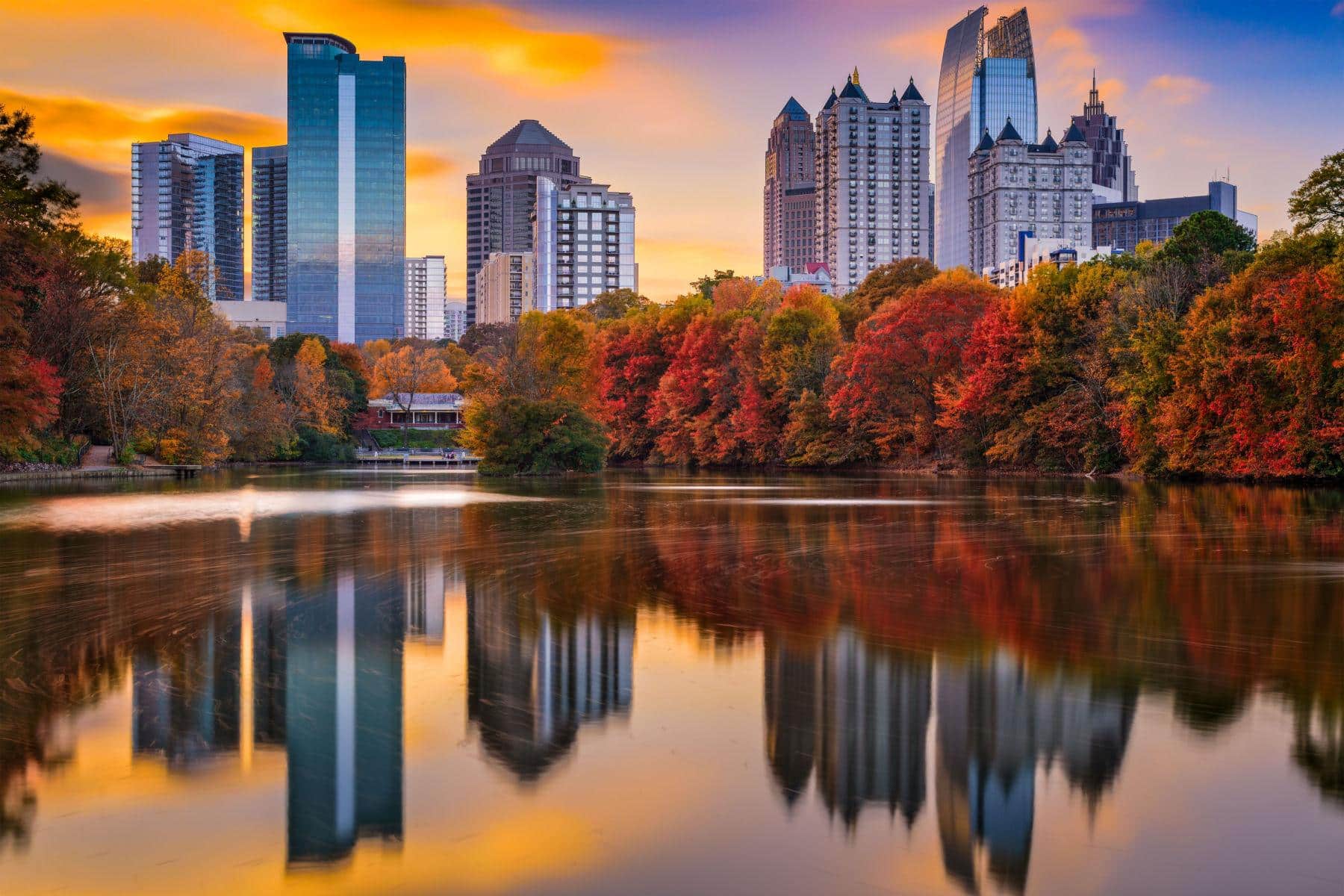
We’re Excited To Share Our List Of Georgia Landmarks With YOU
Georgia is known for its peaches, its southern hospitality, and for being the birthplace of some of the most influential people in the world including Martin Luther King.
It’s also home to some truly amazing landmarks. More Than Just Parks is excited to share our list of the Top 25 Georgia Landmarks with you. And we’re kicking off our list at #25 with the Center For Puppetry Arts in Atlanta.
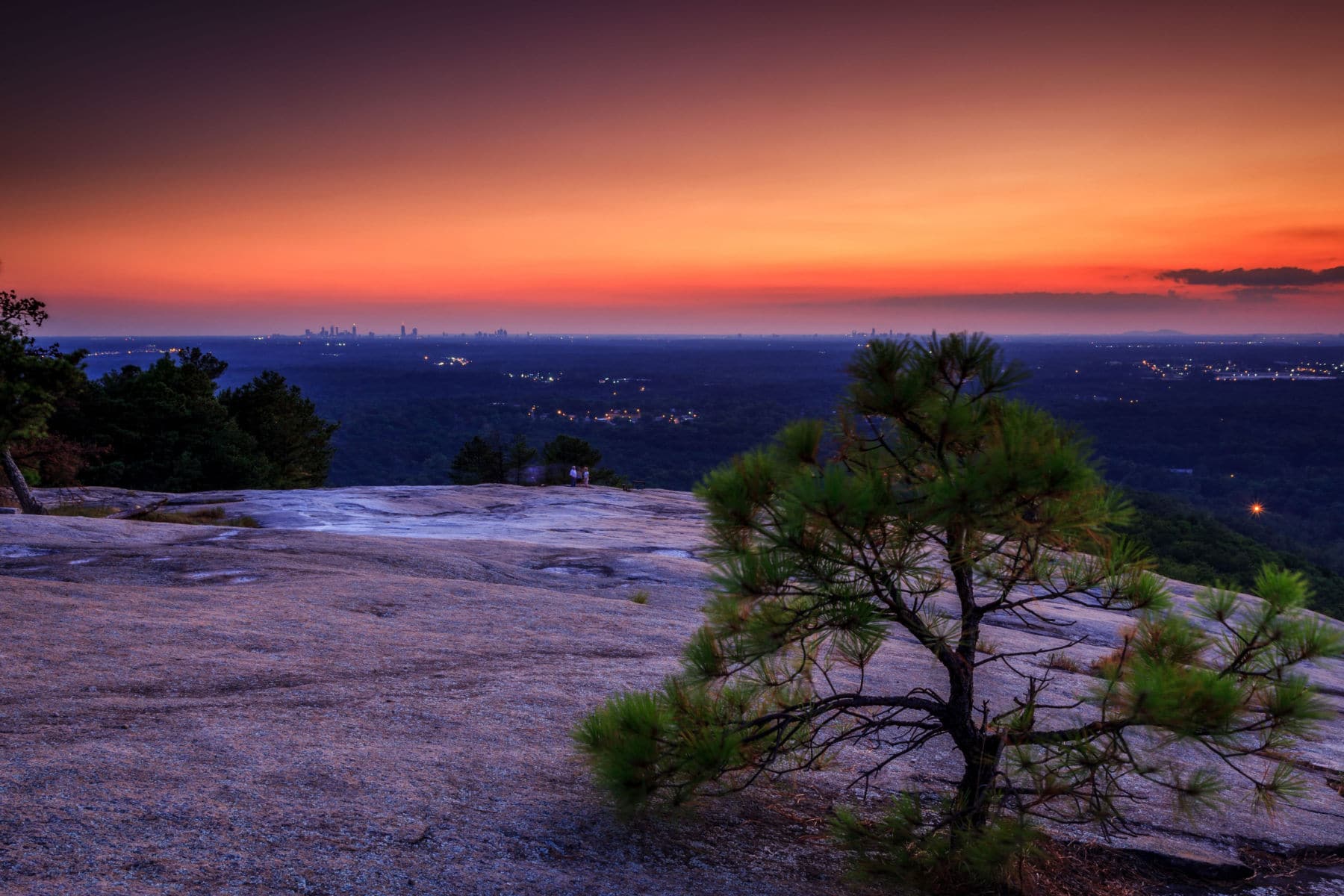
Top 25 Georgia Landmarks
25. Center For Puppetry Arts
The Center for Puppetry Arts in Atlanta was founded in 1978 by Vincent Anthony, a puppeteer and teacher who had previously run a puppetry program at Mississippi State University. Anthony saw the need for a dedicated space for puppetry in the Southeastern United States, and chose Atlanta as the site for the new center.
The center’s first home was a renovated church in Midtown Atlanta, where it opened in 1978 with a production of “Rumpelstiltskin.”
Over the next several years, the center developed a reputation for high-quality puppetry productions and educational programs, and in 1984 it moved to a larger space in the city’s Inman Park neighborhood.
The Center Has Undergone Expansions & Renovations
In the 1990s, the center expanded again, adding a museum to its facilities and developing partnerships with other cultural organizations in Atlanta. It also began to tour its productions around the country and internationally, bringing puppetry to audiences who might not otherwise have access to it.
In the early 2000s, the center underwent a major renovation and expansion, adding new performance spaces, classrooms, and workshops.
Today, the Center for Puppetry Arts is one of the largest nonprofit puppet theaters in the United States, with a diverse array of programming for all ages, including performances, workshops, and special events.
The center’s collection of puppets and related materials is also renowned, with more than 10,000 items from around the world.
The collection includes puppets from as far back as the 19th century, as well as contemporary works by puppet artists from around the world.

24. Georgia Capitol Museum
Built to symbolize Georgia’s reemergence after the Civil War, the Capitol continues to be one of the most impressive buildings in the state. Our next Georgia landmark seeks to preserve and interpret the history of the Georgia Capitol building as well as the events that have taken place within its walls.
At #24 on our list of the Best Georgia Landmarks is the Georgia Capitol Museum.
The Georgia Capitol Museum is located inside the Georgia State Capitol building in Atlanta. The museum is dedicated to preserving and promoting the history and culture of Georgia, with a particular focus on the state’s government and politics.
The museum features a variety of exhibits and artifacts, including historical documents, photographs, and memorabilia related to Georgia’s governors, legislators, and other political figures. Visitors can learn about the state’s role in major historical events, such as the Civil War and the civil rights movement, as well as its contributions to art, literature, and other cultural fields.
One of the museum’s main attractions is the Georgia Capitol building itself, which is a historic landmark and an example of neoclassical architecture. Visitors can take guided tours of the building, including the House and Senate chambers, and learn about the history and significance of its design and construction.
Other notable exhibits at the Georgia Capitol Museum include a replica of the Liberty Bell, a display of Georgia’s state symbols, and a tribute to the state’s military veterans. The museum also hosts special events and programs throughout the year, including lectures, concerts, and art exhibitions.
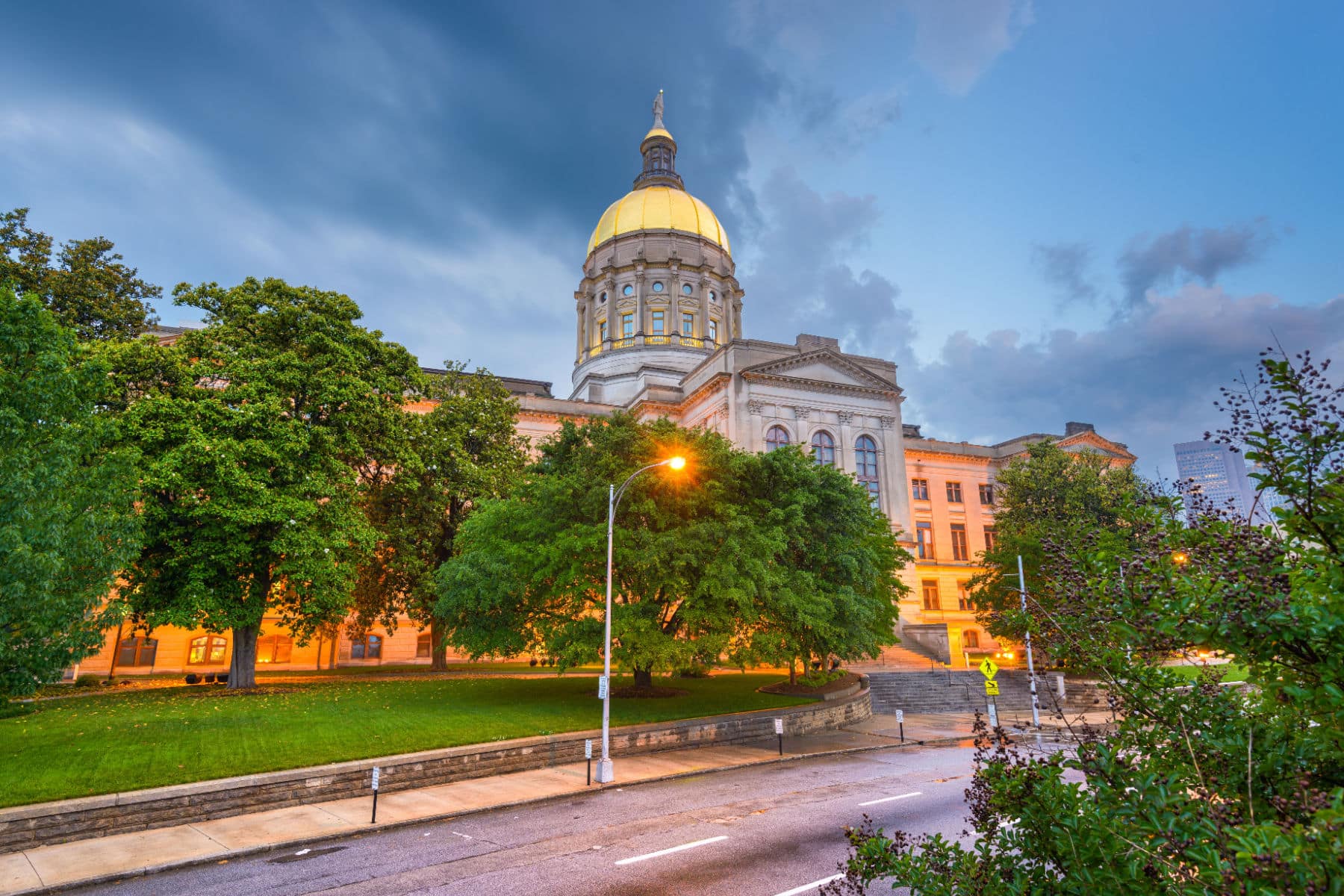
23. Tallulah Falls
Our next Georgia landmark is one of the most spectacular canyons in the eastern U.S. At #23 on our list of the Best Georgia Landmarks is Tallulah Falls.
Tallulah Falls is a series of waterfalls and a state park located in the northeastern part of Georgia. The falls are situated within the Tallulah Gorge, which is a 2-mile-long and 1,000-foot-deep canyon that was formed by the Tallulah River.
The Tallulah Gorge is a popular destination for outdoor enthusiasts and nature lovers, with hiking trails, camping areas, and scenic overlooks offering stunning views of the surrounding landscape. Visitors can explore the gorge via a series of trails that lead to the waterfalls and other points of interest, or take part in activities such as rock climbing, kayaking, and fishing.
It Consists Of Six Separate Waterfalls
The Tallulah Falls consist of six separate waterfalls, with a combined drop of more than 500 feet. The most popular of these falls is the Tallulah Gorge Falls, which has a drop of 150 feet and is accessible via a paved path and a series of stairs. Other notable falls in the park include the Hurricane Falls, which has a drop of 96 feet, and the Bridal Veil Falls, which is a series of cascades that drop a total of 45 feet.
In addition to its natural beauty, Tallulah Falls has a rich history, with evidence of human habitation dating back thousands of years. The area was once home to the Cherokee people, and later became a center of industry during the 19th and early 20th centuries, with textile mills and other factories dotting the landscape.
Today, Tallulah Falls is a popular destination for visitors from all over the world, offering a unique combination of natural beauty, outdoor recreation, and cultural heritage. Whether you’re an avid hiker, a history buff, or simply looking to experience the natural wonders of Georgia, Tallulah Falls is an unforgettable destination.
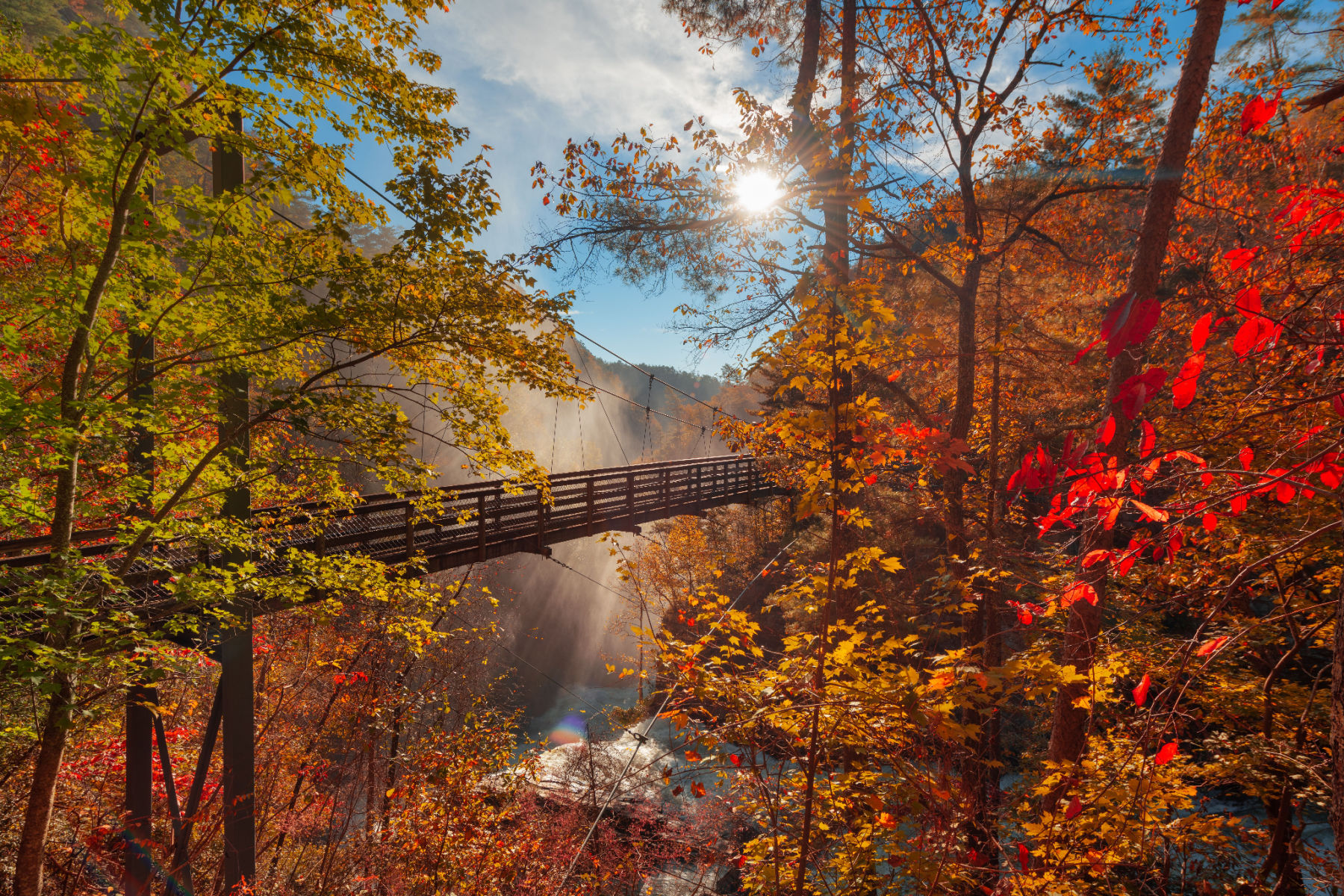
22. Pickett’s Mill Battlefield State Historic Site
Our next Georgia landmark is one of the best preserved Civil War battlefields in the nation. Visitors can travel roads used by Federal and Confederate troops, see earthworks constructed by these men, and walk through the same ravine where hundreds died.
At #22 on our list of the Best Georgia Landmarks is Pickett’s Mill Battlefield State Historic Site.
Pickett’s Mill Battlefield State Historic Site played a significant role in the Atlanta Campaign during the American Civil War.
The Battle of Pickett’s Mill took place on May 27, 1864, during General Sherman’s Atlanta Campaign. Confederate forces, under the command of General Joseph E. Johnston, had established a defensive line near Pickett’s Mill, while Union forces, under General William T. Sherman, attempted to break through and advance towards Atlanta.
The battle was fierce and lasted for several hours, with the Union forces suffering heavy losses. Despite being outnumbered, the Confederates were able to hold their ground and repel the Union attack.
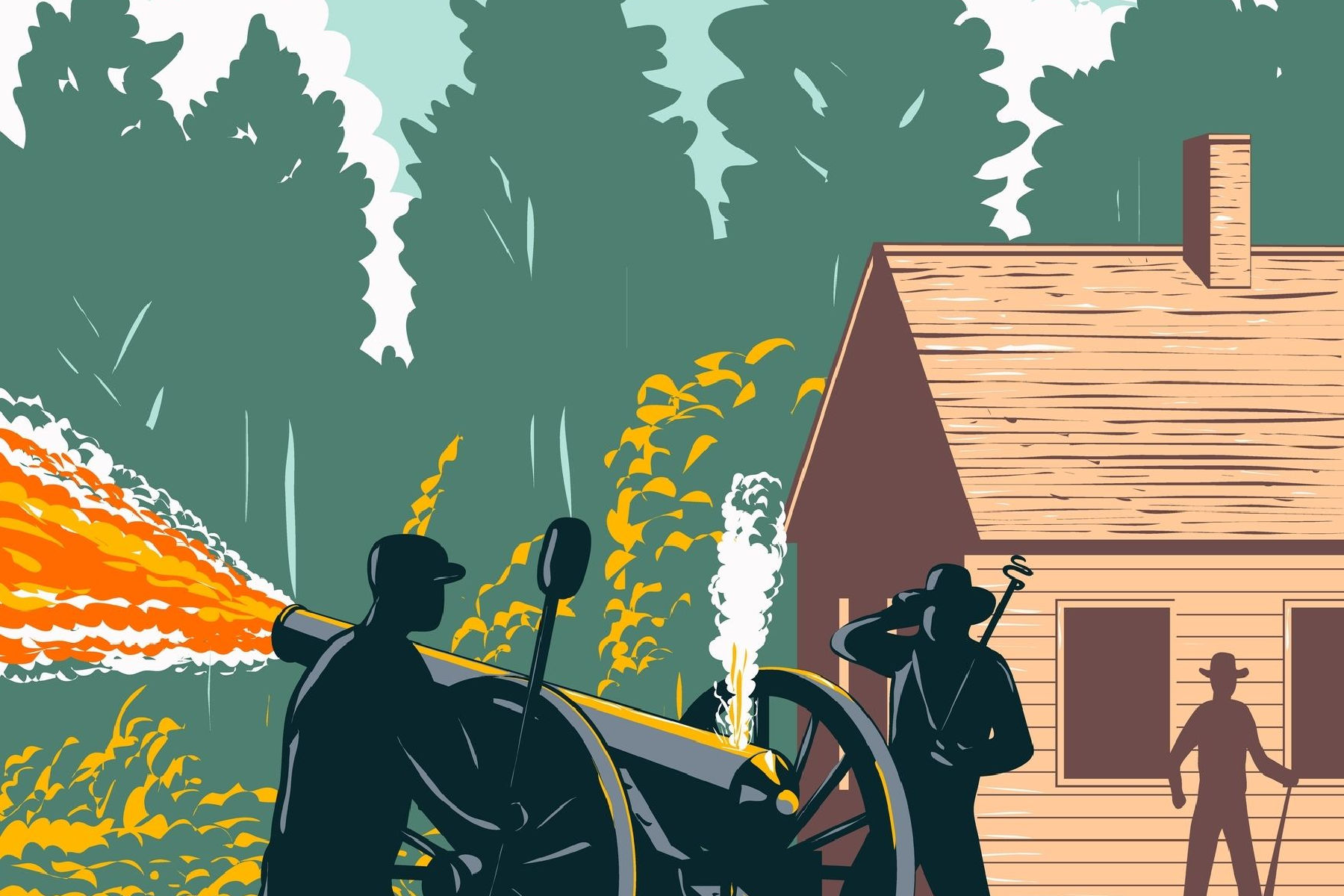
After The Civil War
After the war, the land around Pickett’s Mill was used for agriculture, with many of the original earthworks and trenches being destroyed or obscured. In the 1930s, however, efforts were made to preserve the site as a historic landmark, and in 1935 the Georgia state legislature established the Pickett’s Mill Battlefield State Historic Site.
Today, visitors to the site can explore the battlefield and see many of the original earthworks and trenches that were used by both sides during the battle. The park also features a museum and visitor center, which includes exhibits on the Civil War and the battle at Pickett’s Mill, as well as a film presentation.
In addition to its historical significance, the Pickett’s Mill Battlefield State Historic Site is also known for its natural beauty, with hiking trails, picnic areas, and opportunities for wildlife viewing. The site offers a unique glimpse into one of the most significant battles of the Civil War and is a popular destination for history buffs, hikers, and nature lovers alike.
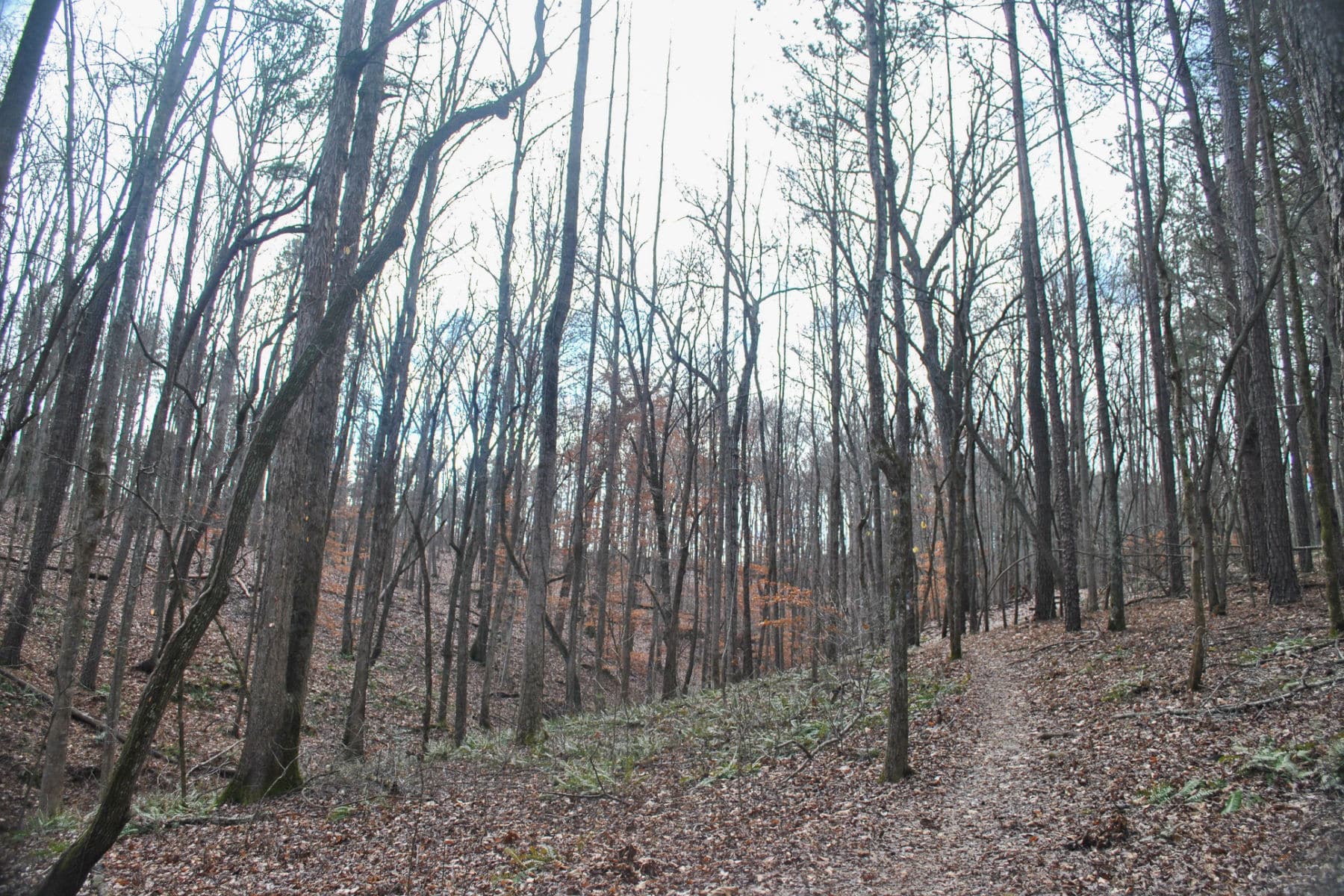
21. Reynolds Mansion On Sapelo Island
We go from the site of a Civil War battlefield to one of Georgia loveliest mansions. At #21 on our list of the Best Georgia Landmarks is Reynolds Mansion On Sapelo Island.
The Reynolds Mansion has a rich and complex history that spans several centuries.
The island was originally inhabited by Native American tribes, who lived on the island for thousands of years prior to the arrival of European explorers. In the 16th century, Spanish explorers visited the island, but it was not until the 18th century that it was settled by Europeans.
In the 1800s, the island was purchased by Thomas Spalding, a wealthy planter who built a large plantation on the island. Spalding’s plantation was one of the largest in the region, and he relied heavily on the labor of enslaved Africans to cultivate crops such as cotton, rice, and indigo.
The Reynolds Mansion was built on the island in the early 20th century by R.J. Reynolds. He was the founder of the R.J. Reynolds Tobacco Company. Reynolds purchased the island in 1934 and built the mansion as a private retreat for himself and his family.
During World War II, the island was used by the military as a training site, and the mansion was used as a barracks and hospital. After the war, the mansion was returned to the Reynolds family, who continued to use it as a vacation home.
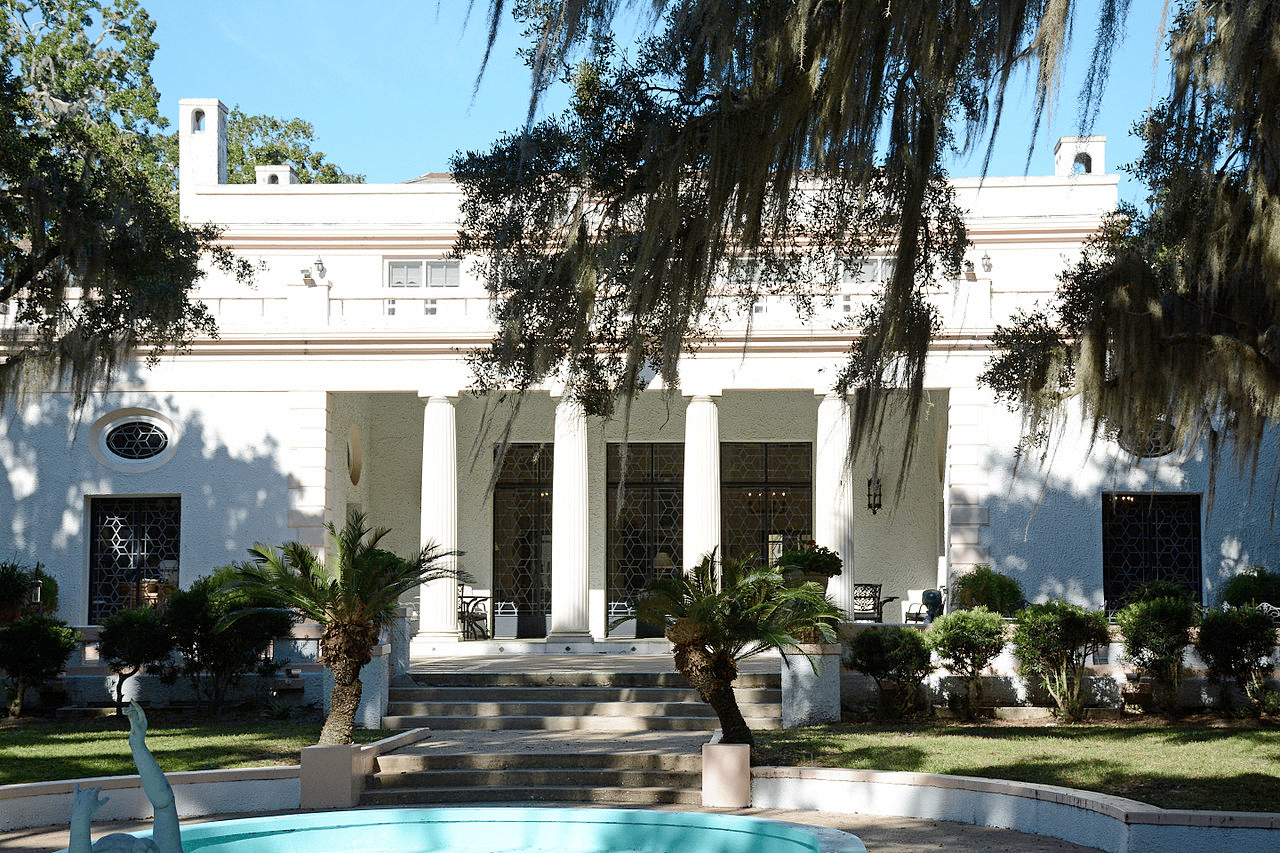
[Reynolds mansion, Sapelo Island, GA | Courtesy of Wikimedia Commons]
Top 20 Georgia Landmarks
20. Savannah Historic District
We’re on to our Top 20 Georgia landmarks. Our next site is the largest National Historic Landmark District in the United States. It contains more than twenty city squares filled with museums, churches, mansions, monuments and famous forts of the Revolutionary & Civil War eras.
At #20 on our list of the Best Georgia Landmarks is the Savannah Historic District.
The Savannah Historic District is a large area in the heart of Savannah. It has been designated a National Historic Landmark. It covers approximately 2.5 square miles and is home to many of the city’s most historic buildings, museums, and attractions.
The district was established in the 18th century and is notable for its well-preserved architecture, which includes examples of Georgian, Federal, and Greek Revival styles. The district is characterized by its grid-like layout, with 22 squares or parks interspersed throughout the area, each with its own unique features and attractions.
Some Of The Highlights
Some of the highlights of the Savannah Historic District include:
- Forsyth Park: This is the largest park in the district, and is home to many of its most popular attractions, including the Forsyth Park Fountain, the Fragrant Garden, and the Forsyth Park Café.
- The Cathedral of St. John the Baptist: This is a stunning cathedral that was built in the late 19th century and features a soaring dome, intricate stained glass windows, and a beautiful interior.
- The Owens-Thomas House and Slave Quarters: This is a historic home that was built in the early 19th century and is notable for its innovative architecture and well-preserved slave quarters.
- The Mercer-Williams House: This is a beautiful home that was built in the 19th century and is now a museum that showcases the history and culture of Savannah.
Visitors to the Savannah Historic District can take guided tours of the area, which include visits to some of its most historic buildings and attractions. The district is also home to many shops, restaurants, and cafes, making it a great place to explore and experience the unique culture and history of Savannah.
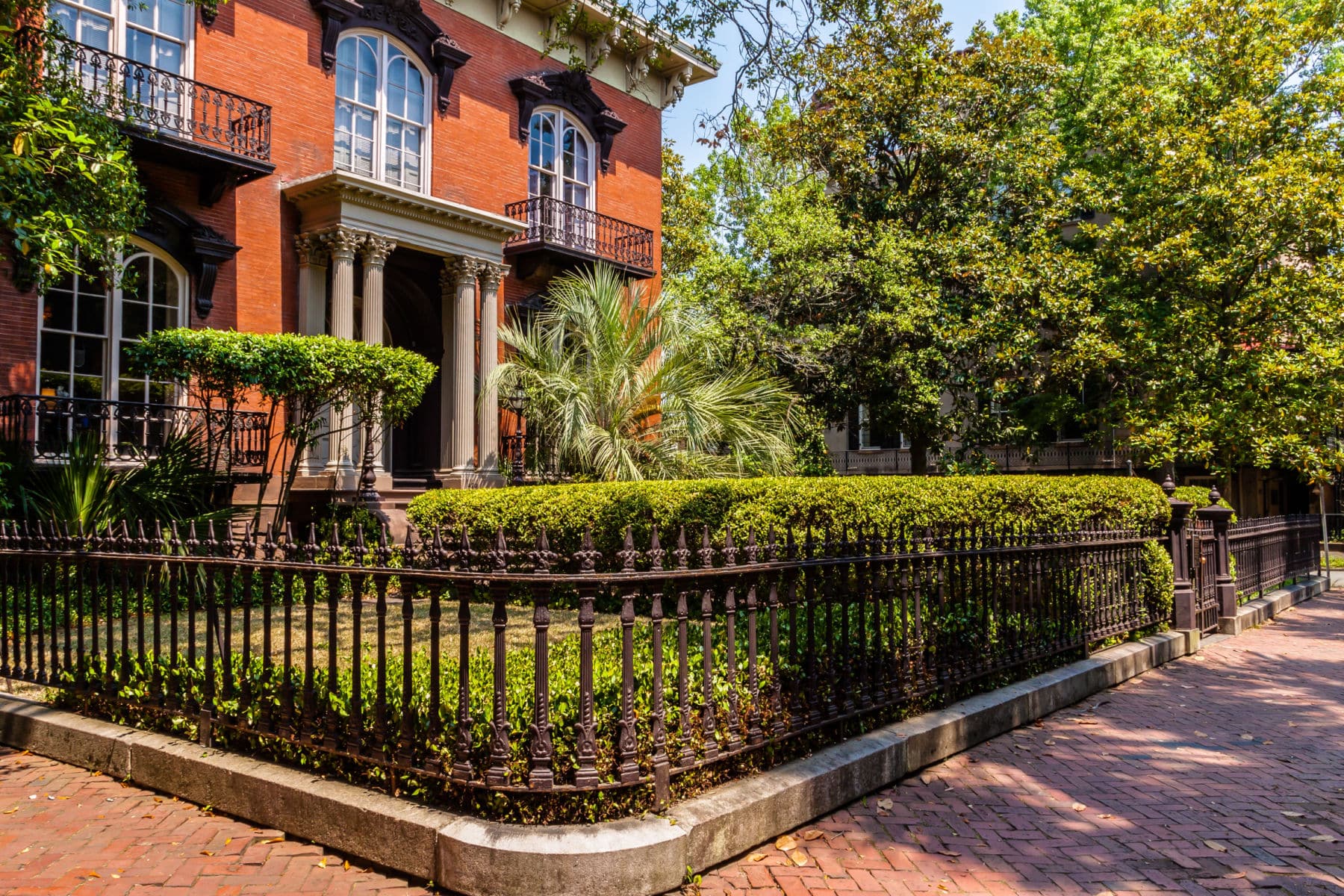
19. Tybee Island Light Station & Museum
Our next Georgia landmark is Georgia’s oldest and tallest lighthouse. At #19 on our list of the Best Georgia Landmarks is the Tybee Island Light Station & Museum.
The Tybee Island Light Station & Museum is a historic lighthouse located on Tybee Island, Georgia. The lighthouse was first built in 1736 and has since undergone several renovations and reconstructions. Today, the lighthouse stands at 145 feet tall and is one of the most recognizable landmarks in the area.
The light station and museum offer visitors a glimpse into the history and culture of the island, as well as the important role that the lighthouse played in the maritime history of Georgia. Visitors can climb the 178 steps to the top of the lighthouse and enjoy panoramic views of the surrounding area.
The museum at the Tybee Island Light Station showcases exhibits on the history of the lighthouse, as well as the history of Tybee Island and its role in the Civil War. Visitors can also explore the restored head keeper’s cottage, which is furnished with period-appropriate furniture and artifacts.
The light station and museum also offer educational programs and events throughout the year, including guided tours, lectures, and hands-on activities for children.
In addition to its historical and educational significance, the Tybee Island Light Station & Museum is also a popular destination for tourists and locals alike, offering beautiful views, outdoor recreation opportunities, and easy access to nearby beaches and attractions.
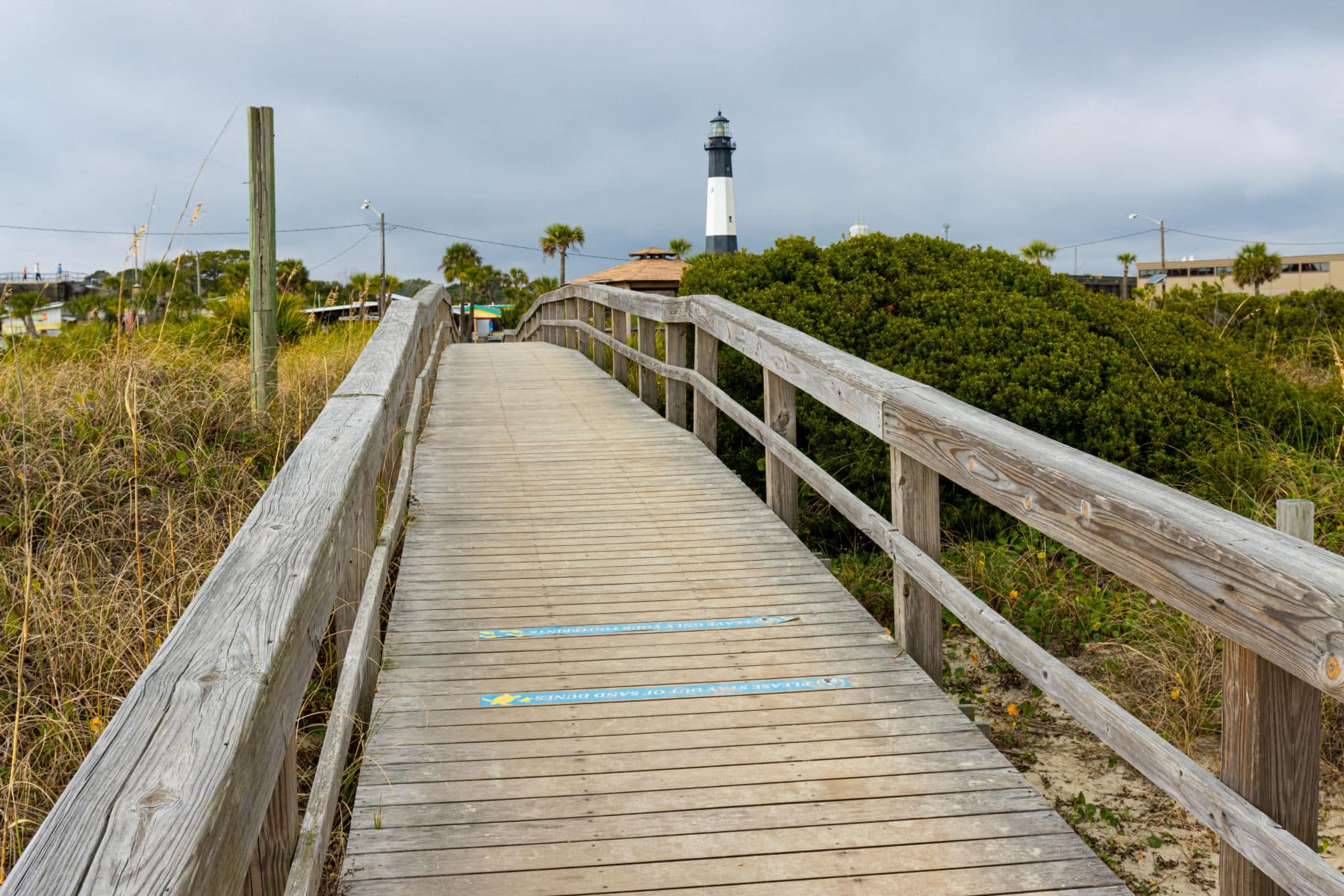
18. Jefferson Davis Memorial Historic Site
At #18 we have a site which examines the life and legacy of the only man to ever serve as President – of the Confederate States of America. It’s the Jefferson Davis Memorial Historic Site.
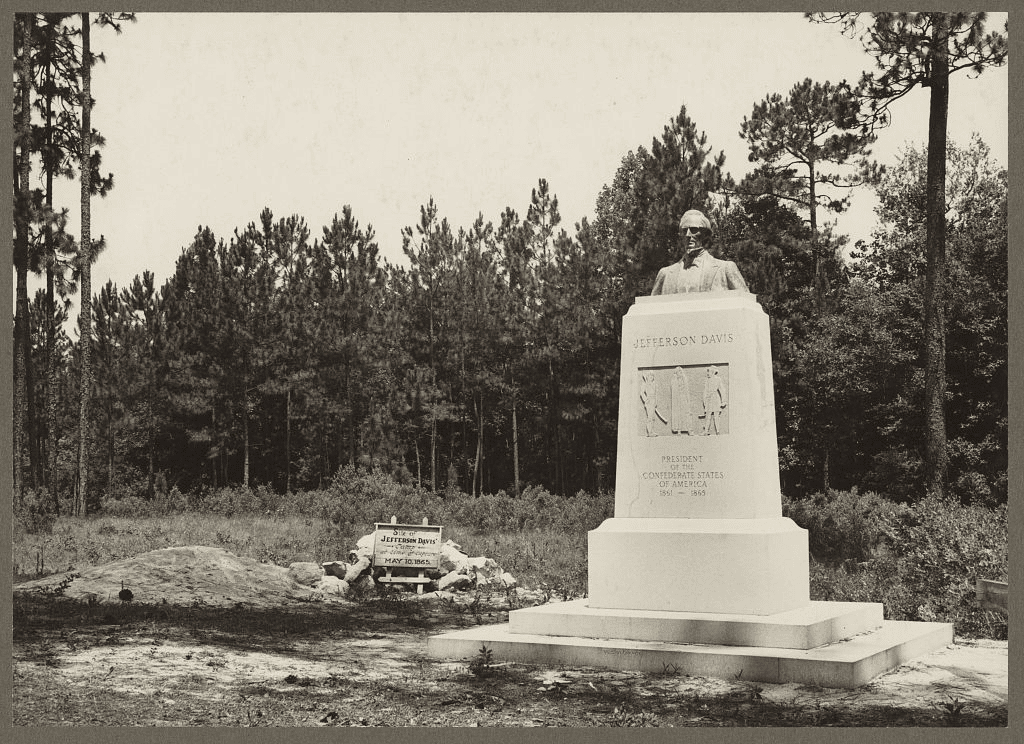
Jefferson Davis
Jefferson Davis (1808-1889) was an American politician and statesman who served as the President of the Confederate States of America from 1861 to 1865 during the American Civil War.
Born in Kentucky, Davis was educated at the United States Military Academy at West Point and served in the US Army before becoming a planter and politician in Mississippi.
In 1845, Davis was elected to the US House of Representatives, where he became an advocate for southern states’ rights and the expansion of slavery into new territories. He went on to serve in the U.S. Senate and as Secretary of War under President Franklin Pierce.
President Of The Confederate States Of America
When Mississippi seceded from the Union in 1861, Davis resigned from the Senate and was selected as the provisional President of the Confederate States of America. He was subsequently elected to a six-year term as President in 1862.
As President of the Confederacy, Davis played a key role in directing the Confederate war effort. He struggled to maintain unity and support among the various southern states, and his military strategy was often criticized for its lack of flexibility and innovation.
Following the surrender of Confederate forces in 1865, Davis was captured and imprisoned for two years. After his release, he retired to private life and wrote his memoirs, which remain an important historical document of the Civil War era.
Today, Davis is a controversial figure in American history, seen by some as a champion of states’ rights and by others as a defender of slavery and the Confederacy.
The Jefferson Davis Memorial Historic Site
The Jefferson Davis Memorial Historic Site is a state park located in Irwin County, Georgia. The park is situated on a 13-acre site that includes a museum, a gift shop, and a memorial to Davis.
The park was established in 1965 by the Georgia Department of Natural Resources and is one of several sites in the state that commemorate the Civil War and the Confederacy.
The centerpiece of the park is the Jefferson Davis Memorial, a 55-foot tall concrete and granite monument that was dedicated in 1957. The monument features a statue of Davis at the top, surrounded by four pillars that represent the four years of the Civil War.
The park also includes a museum that features exhibits related to Davis and the Confederacy. The museum’s exhibits include artifacts and displays related to Davis’s life and political career, as well as information about the causes and events of the Civil War. The museum also features a gift shop where visitors can purchase souvenirs and books related to the history of the Confederacy.
The park is open year-round and offers guided tours and educational programs for visitors of all ages. The park is particularly popular with Civil War history enthusiasts and those interested in the legacy of the Confederacy.
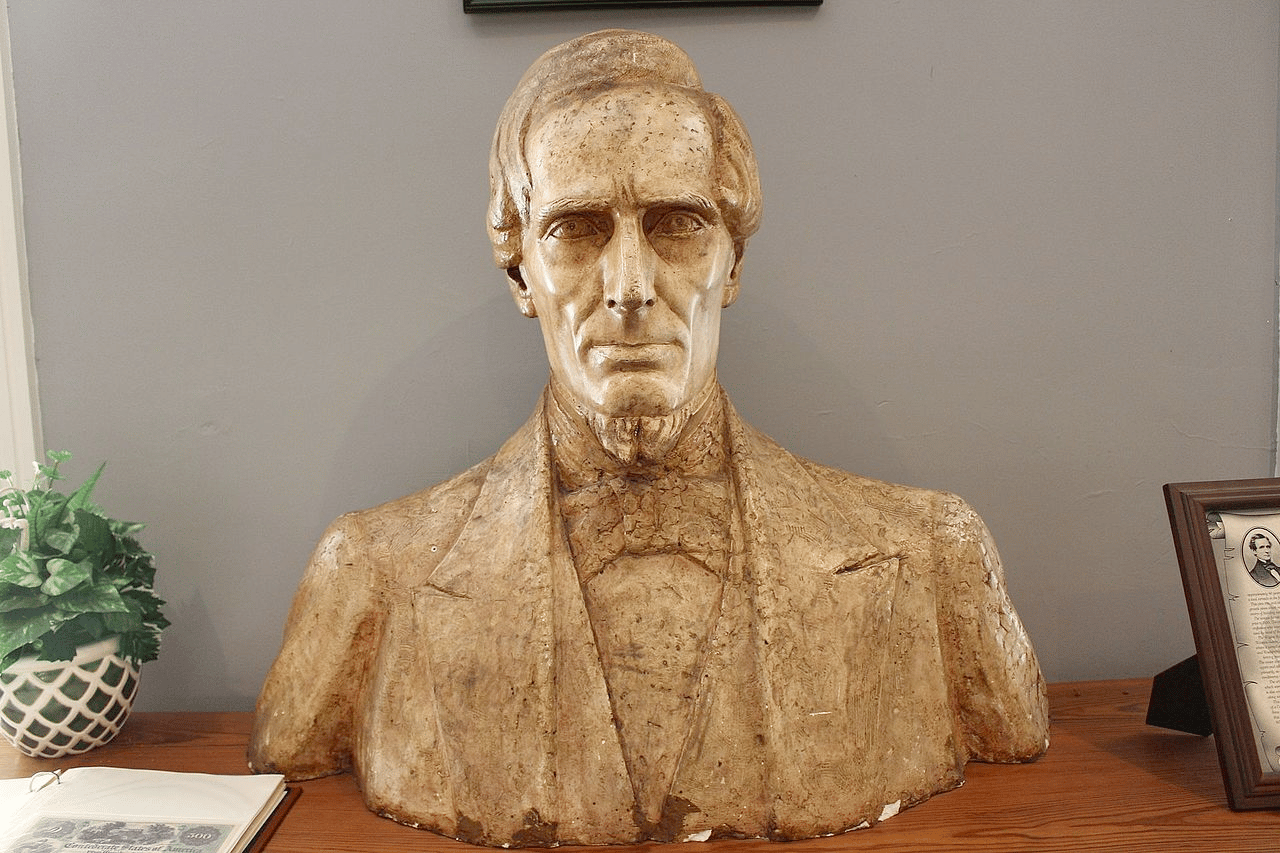
17. Fort Frederica National Monument
Georgia has more to offer than just Civil War history. Before there was even a United States of America, Georgia’s Fort Frederica played a decisive role in the history of the region. This is why we wanted to be sure to include it on our list of the Best Georgia Landmarks and we have done so at #17.
Fort Frederica National Monument is located on St. Simons Island, Georgia. It commemorates the settlement of the area by the British in the early 18th century. The monument includes the remains of the fortified town of Frederica, which was established in 1736 by General James Oglethorpe as part of a plan to establish a new colony in the region.
The British settlement of Georgia was established in 1733, and Frederica was founded three years later as a military outpost to defend the colony against Spanish attacks from Florida. The town was named in honor of King George II and quickly became a bustling hub of trade and commerce.

The Battle Of Bloody Marsh
During the 1740s, the region was the site of conflict between the British and Spanish, who were competing for control of the area. In 1742, the British army, led by General Oglethorpe, defeated a much larger Spanish force at the Battle of Bloody Marsh, which took place near Frederica. The victory helped to secure British control of the area and ensured the survival of the colony.
In the years that followed, Frederica continued to grow and prosper, but it was eventually abandoned in the late 1740s as the region became less important to British interests. The town was eventually destroyed by fire, and its ruins were left to decay.
In the early 20th century, efforts were made to preserve the site, and in 1936 it was designated a national monument.
Today, visitors to Fort Frederica National Monument can explore the ruins of the town, which include the remains of the fort, the barracks, and the town’s main street. The monument also features a museum that showcases artifacts and exhibits related to the history of the area and its settlement by the British.

16. Etowah Mounds
Our next Georgia landmark is the most intact Mississippian Culture site in the Southeast. Visitors can follow a nature trail where they can view a v-shaped fish trap used for catching fish. The trail also highlights how early civilizations used native trees for food and medicine.
At #16 on our list of the Best Georgia Landmarks is the Etowah Mounds.
The Etowah Mounds are a pre-Columbian archaeological site located in Bartow County, Georgia. The site is known for its impressive earthen mounds, which were built by the Mississippian culture over 1,000 years ago.
The Etowah Mounds site covers approximately 54 acres and includes six earthen mounds, a plaza, a village area, and several smaller archaeological features. The largest of the mounds is called the Great Temple Mound, which stands at 63 feet tall and was used as a ceremonial center and the political hub of the Mississippian chiefdom that once inhabited the area.
The site was occupied by the Mississippian culture between 1000 and 1550 AD and was a major center of political, economic, and religious activity in the region. The Mississippian culture was known for its sophisticated agriculture, complex social structures, and skilled craftsmanship.
The Etowah Mounds were first excavated in the 19th century, and several artifacts and structures were discovered, including a wide variety of pottery, jewelry, and tools. Today, the site is part of the Etowah Indian Mounds State Historic Site, which is open to the public and offers guided tours, exhibits, and educational programs.
The Etowah Mounds are a unique and important archaeological site that provides a window into the fascinating history and culture of the Mississippian people. The site is also a popular destination for visitors to the area who are interested in history, archaeology, and Native American culture.
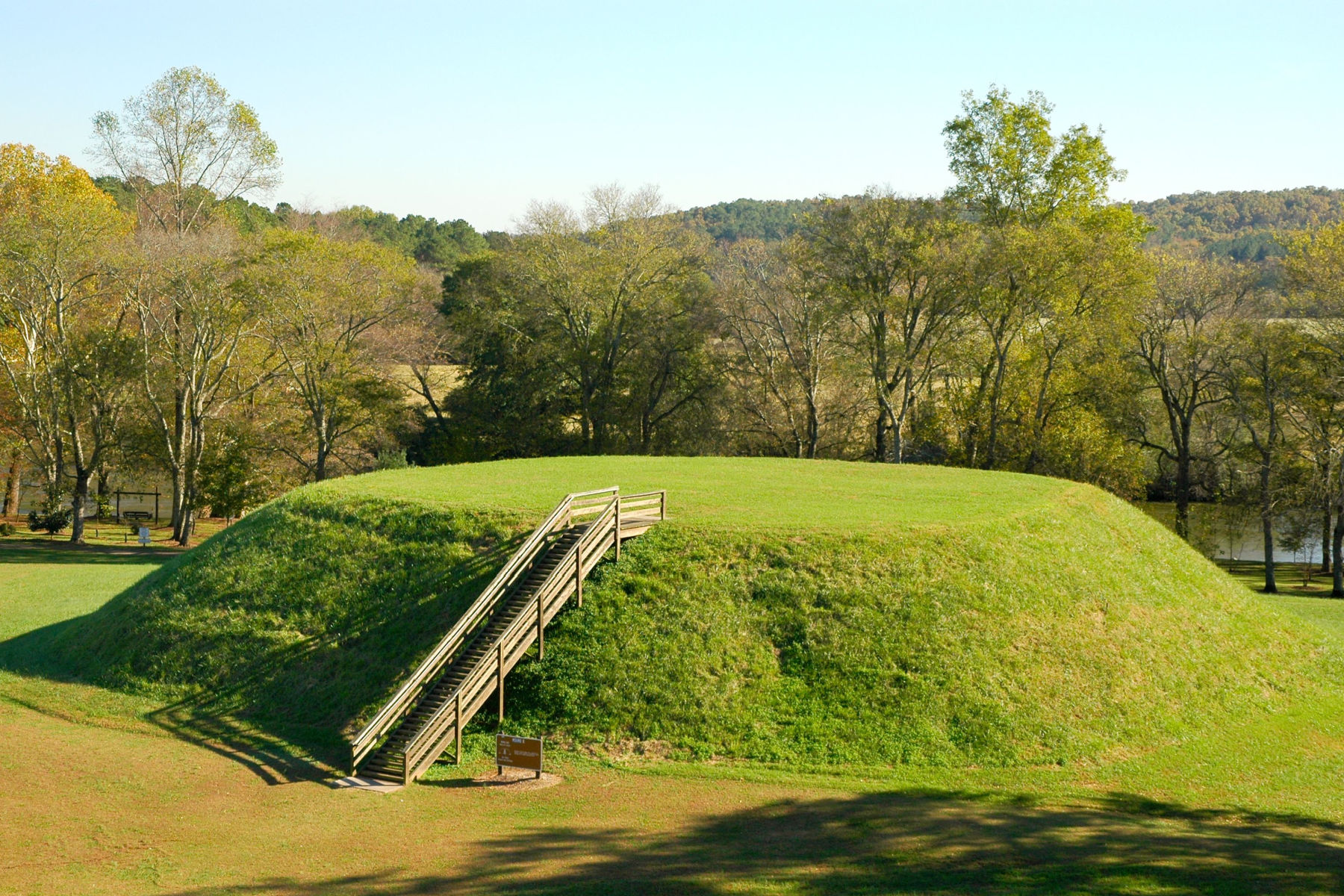
Top 15 Georgia Landmarks
15. The Varsity
We’re on to our Top 15 Georgia landmarks. Our next site claims to be the “world’s largest drive-in” and is a must-do for locals, tourists, and visiting dignitaries. At #15 on our list of the Best Georgia Landmarks is The Varsity.
The Varsity is a famous fast-food restaurant in Atlanta, Georgia, that has been serving up classic American cuisine since 1928. The restaurant is known for its iconic neon sign, its cheerful carhop service, and its famous menu items, including hamburgers, hot dogs, onion rings, and frosted orange drinks.
The Varsity was founded by Frank Gordy, who had the idea to open a drive-in restaurant that would serve hot dogs and cold drinks to students at Georgia Tech. The first Varsity location opened near the Georgia Tech campus and quickly became a popular gathering spot for students and locals alike.
Over the years, The Varsity expanded to include additional locations in the Atlanta area, as well as franchises in other cities. The restaurant has become an Atlanta institution, with generations of families and students returning to enjoy its classic fare and lively atmosphere.
In addition to its popularity with locals and tourists, The Varsity has also been featured in movies, TV shows, and songs, including the 1977 film “Smokey and the Bandit” and the 1994 song “Love Shack” by the B-52s.
Today, The Varsity remains a beloved institution in Atlanta and a symbol of the city’s unique history and culture. Its classic menu and lively atmosphere continue to attract visitors from all over the world who want to experience a true taste of Atlanta.

The Varsity, Atlanta | Courtesy of Wikimedia Commons
14. High Museum Of Art
Our next Georgia landmark’s historical American Art collection includes over 1,200 paintings, sculptures, drawings, and prints made by artists working within the United States between 1780 and 1980. At #14 on our list of the Best Georgia Landmarks is the High Museum of Art.
The High Museum of Art was founded in 1905 as the Atlanta Art Association and has since grown to become one of the leading art institutions in the Southeastern United States.
The museum’s first home was a small space in the basement of the Carnegie Library in Atlanta, but it soon outgrew that space and moved to several different locations before settling in its current home in the mid-1980s. The current building was designed by architect Richard Meier and is known for its distinctive white exterior and soaring galleries.
Over the years, the High Museum of Art has amassed a collection of more than 18,000 works of art, spanning a wide range of artistic styles and mediums. The collection includes works by many of the world’s most famous artists, including Claude Monet, Pablo Picasso, and Salvador Dali, as well as works by many up-and-coming artists and regional artists.
In addition to its impressive permanent collection, the High Museum of Art also hosts a variety of temporary exhibitions throughout the year, featuring works by both established and emerging artists. The museum also offers a wide range of educational programs and events, including lectures, workshops, and family programs.
Today, the High Museum of Art is widely regarded as one of the premier art museums in the United States and attracts visitors from around the world. Its collection and programs reflect the rich artistic heritage and vibrant cultural scene of Atlanta and the Southeastern United States.

High Museum of Art, Atlanta | Courtesy of Wikimedia Commons
13. Centennial Olympic Park
Our next Georgia landmark not only serves as a legacy of the 1996 Olympic Games, but is the center of a thriving tourist district with neighbors that include the College Football Hall of Fame, the National Center for Civil & Human Rights, World of Coca-Cola, Georgia Aquarium, CNN Center and Children’s Museum of Atlanta.
At #13 on our list of the Best Georgia Landmarks is Centennial Olympic Park.
Centennial Olympic Park was built for the 1996 Summer Olympics. The park is a lasting legacy of the Atlanta Olympics and is now a popular gathering spot for locals and tourists alike.
The idea for the park was first proposed in the early 1990s, as Atlanta was bidding to host the Olympics. The park was designed by a team of architects, landscape architects, and engineers, who worked to create a beautiful and functional space that could host a variety of Olympic events.
During the 1996 Summer Olympics, Centennial Olympic Park served as the central gathering place for athletes and visitors, as well as the site of several Olympic events, including concerts and fireworks displays.

1996 Centennial Olympic Games | Courtesy of Wikimedia Commons
The Park Became The Site Of A Tragic Bombing
However, the park also became the site of a tragic bombing on July 27, 1996, which killed two people and injured more than 100 others. The bombing caused significant damage to the park and its surrounding buildings, but the city of Atlanta worked quickly to repair the damage and reopen the park.
Today, Centennial Olympic Park has been fully restored and continues to serve as a symbol of Atlanta’s Olympic legacy. The park features a variety of attractions, including a large fountain, an amphitheater, a visitor center, and a variety of sculptures and artwork.
The park is also a popular gathering spot for events and concerts throughout the year, and it has become an important part of the downtown Atlanta landscape. The park’s legacy as a site of both tragedy and triumph serves as a reminder of the power of community and the resilience of the human spirit.

Centennial Olympic Park, Atlanta | Courtesy of Wikimedia Commons
12. Kennesaw Mountain National Battlefield Park
We’ve included more than just one Civil War site on our list of historic sites in Georgia. In 12th place on our list is Kennesaw Mountain National Battlefield Park.
Kennesaw Mountain National Battlefield Park is a historic site located in northern Georgia, near the city of Marietta, that commemorates the Battle of Kennesaw Mountain, which took place during the American Civil War. The battle was fought on June 27, 1864, and was one of the largest and most significant engagements of the Atlanta Campaign.
The Atlanta Campaign was a military operation launched by Union General William T. Sherman in 1864, with the goal of capturing the city of Atlanta, a key Confederate stronghold. The Confederate army, led by General Joseph E. Johnston, was determined to stop the Union advance, and the two sides clashed in a series of fierce battles and skirmishes throughout the summer.
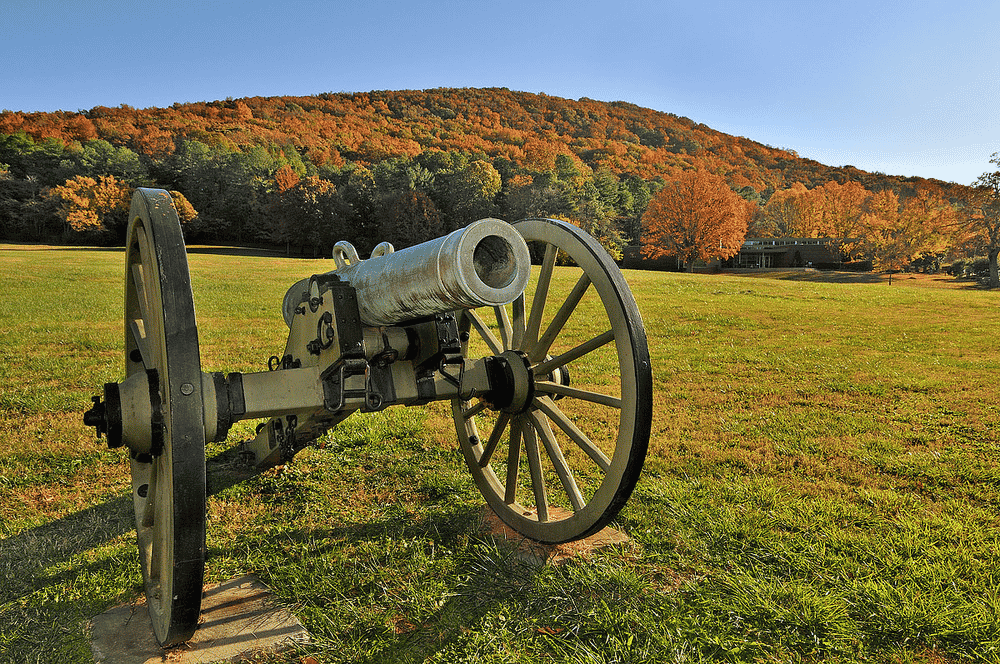
A Battle For The City Of Atlanta
The Battle of Kennesaw Mountain was fought between Union forces under the command of General Sherman and Confederate forces led by General Johnston. The battle took place on the slopes of Kennesaw Mountain, a prominent landmark that provided a natural defensive position for the Confederate army.
The battle was a brutal and bloody affair, with both sides suffering heavy casualties. The Union forces eventually managed to dislodge the Confederates from their positions on the mountain, but at a high cost.
The battle was a significant setback for the Union army and demonstrated the difficulty of their campaign against a determined Confederate army.
After the war, the site of the Battle of Kennesaw Mountain was preserved as a national park, and in 1917 it was designated as a national battlefield. Today, the park covers over 2,900 acres and includes a museum, a visitor center, and several miles of hiking trails.
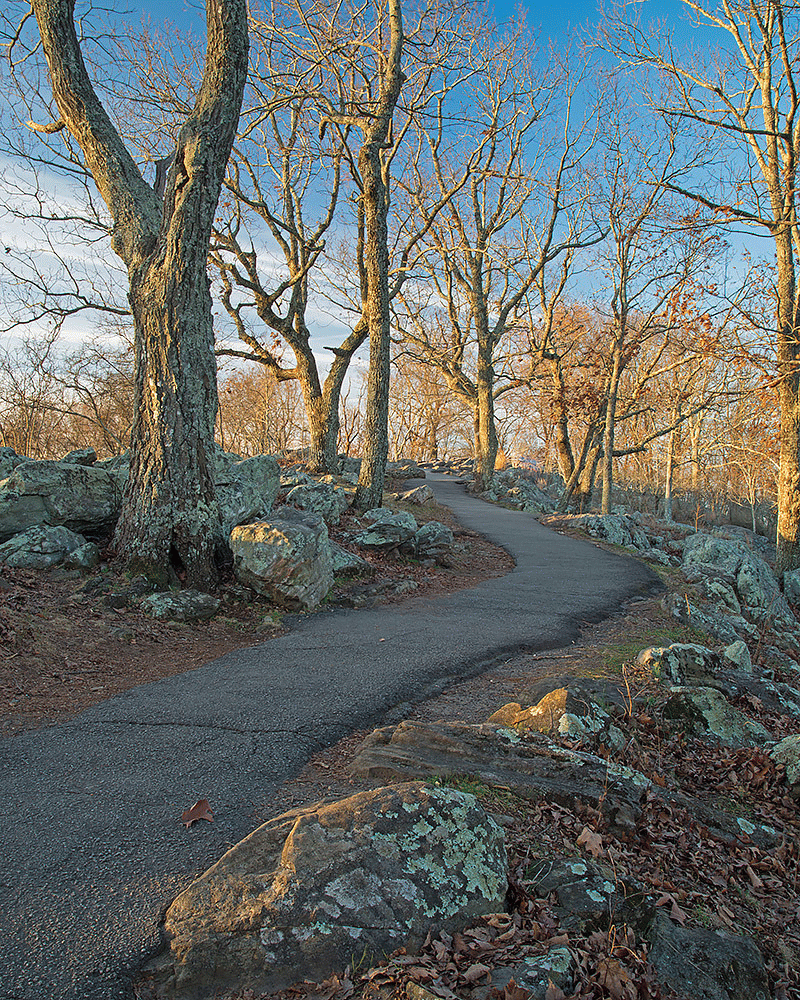
11. Georgia Aquarium
Our next Georgia landmark is one of the largest aquariums in the world. It was opened in 2005 and is home to thousands of marine animals, including whale sharks, beluga whales, dolphins, penguins, and sea otters.
At #11 on our list of the Best Georgia Landmarks is the Georgia Aquarium.
The aquarium was built by a team of designers, architects, and marine biologists who worked together to create a state-of-the-art facility that would provide a home for a wide range of marine animals.
The aquarium’s exhibits are designed to educate visitors about the importance of ocean conservation and to promote awareness of the fragile marine ecosystem.

Check Out The Ocean Voyage Exhibit
One of the most popular exhibits at the Georgia Aquarium is the Ocean Voyager exhibit, which features a massive tank that holds more than 6 million gallons of water. The exhibit is home to several whale sharks, which are the largest fish species in the world, as well as a variety of other marine animals.
In addition to its impressive exhibits, the Georgia Aquarium also offers a variety of educational programs and events, including talks and demonstrations by marine biologists, behind-the-scenes tours, and interactive exhibits that allow visitors to touch and interact with some of the aquarium’s animals.
Since its opening, the Georgia Aquarium has become a popular tourist attraction, drawing visitors from all over the world who come to see its impressive collection of marine life and to learn about the importance of ocean conservation.

Top 10 Georgia Landmarks
10. Andersonville National Historic Site
We’re on to our Top 10 Georgia landmarks. In putting together our list of the Best Georgia Landmarks we felt that it was important to include more than just Civil War battlefields.
At #10, we’ve included what many historians consider to be the most infamous prisoner-of-war camp during the conflict – Andersonville.
Andersonville is the site of the infamous Confederate prisoner-of-war camp. There were 150 military prisons and Andersonville was both the largest and the most notorious. Of the 45,000 Union soldiers imprisoned there, almost 13,000 died.
In “Civil War Prison Camps,” author Gary Flavion chronicled the suffering at this camp writing, “Robert H. Kellog was 20 years old when he walked through the gates of Andersonville prison. He and his comrades had been captured during a bloody battle at Plymouth, North Carolina. In the depths of Georgia, they discovered that their hardships were far from over.”
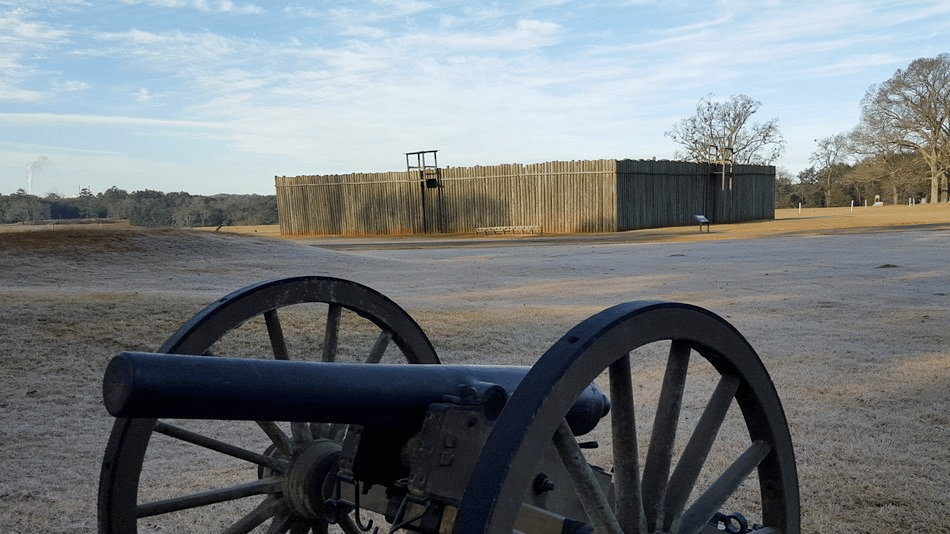
Conditions of the Camp
Robert Kellog described the conditions of the camp. “As we entered the place, a spectacle met our eyes that almost froze our blood with horror…before us were forms that had once been active and erect—stalwart men, now nothing but mere walking skeletons, covered with filth and vermin…Many of our men exclaimed with earnestness, ‘Can this be hell?'”
Andersonville is the only national park to serve as a memorial to Americans held as prisoners of war. Andersonville National Historic Site preserves the site of the largest of the many Confederate military prisons that were established during the Civil War.
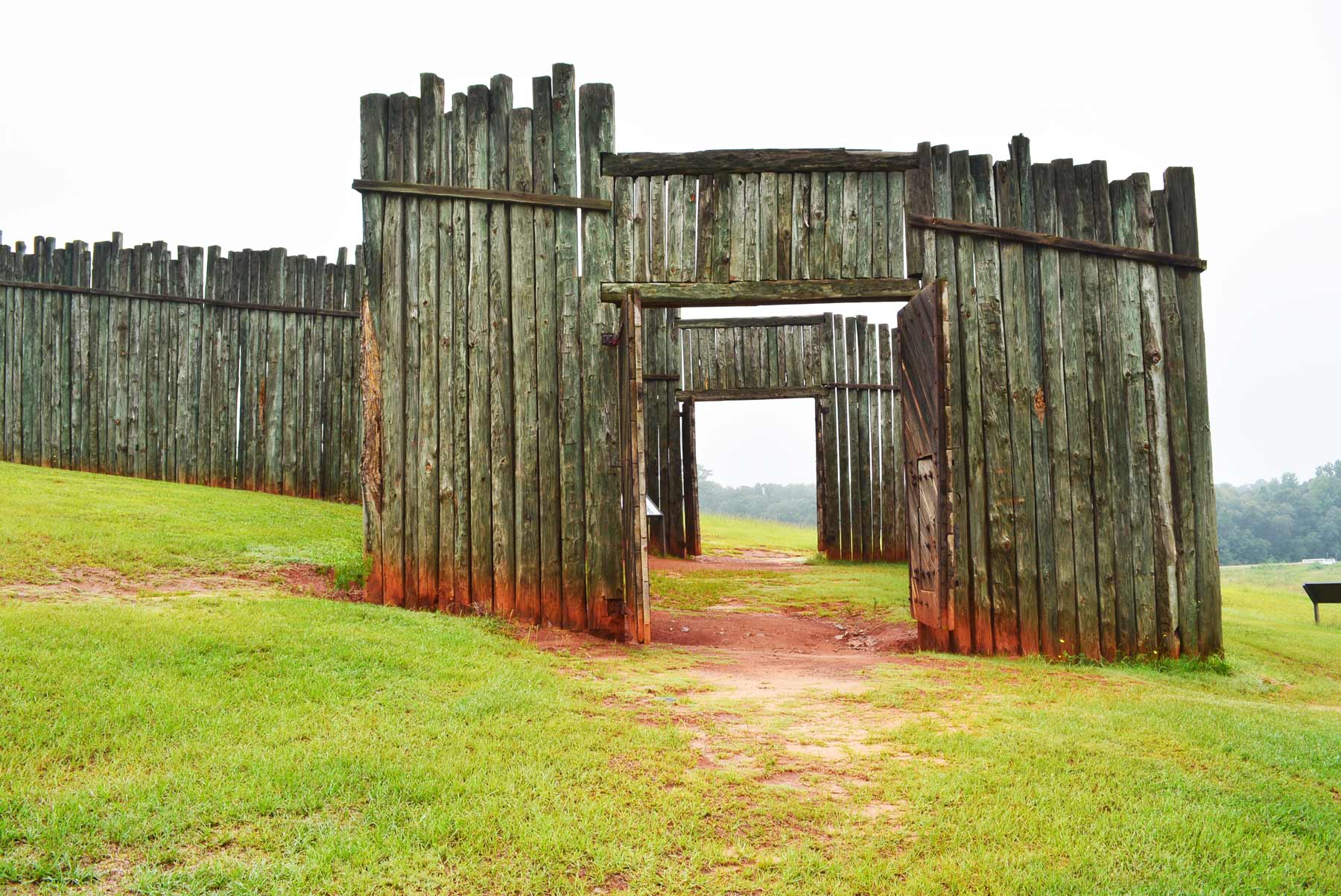
Explore The Story Of Prisoners Of War
A visit to Andersonville National Historic Site offers a variety of ways to explore the story of prisoners of war in American history.
The National Prisoner of War Museum provides an overview of both the Civil War prison camp and an introduction to the experiences of American prisoners of war through time. It’s the only museum solely dedicated to interpreting the American prisoner of war experience.
The National Prisoner of War Museum is dedicated to all prisoners of war in America’s past who have served their country with dignity and distinction, so that current and future generations will be inspired by their service and sacrifice.
Touring the historic prison site offers an opportunity to contemplate first-hand the hardships faced by Union prisoners of war imprisoned here in 1864-65.
The 20,000 graves in the Andersonville National Cemetery vividly illustrate the continuing cost of freedom. During your visit, the park provides numerous opportunities to better understand the resources found here and the history of prisoners of war through tours, programs, and special events. (Source: NPS)
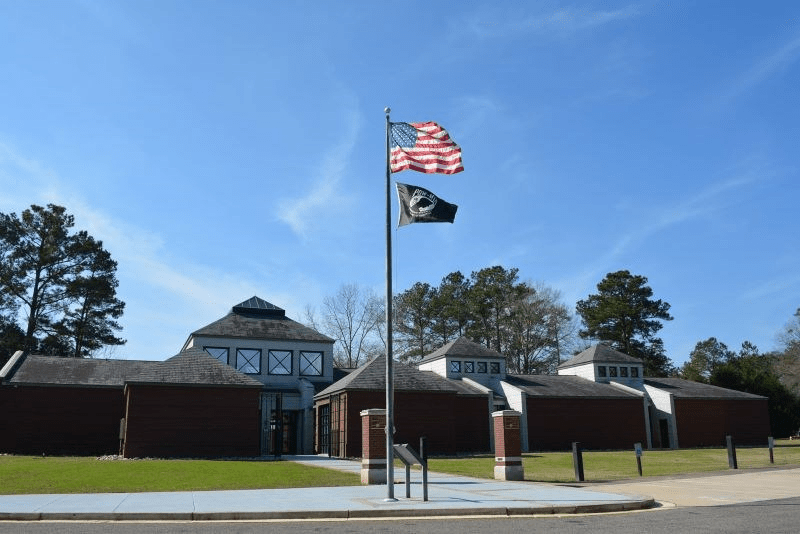
Take A Deeper Dive
Before you travel to Andersonville, however, you may want to learn a little bit more about it. If so then you’re in luck. I recommend the following resources:
- Andersonville by MacKinlay Kantor. MacKinlay Kantor’s Andersonville tells the story of the notorious Confederate Prisoner of War camp, where fifty thousand Union soldiers were held captive—and fourteen thousand died—under inhumane conditions.
- John Ransom’s Andersonville Diary. A stirring account written by a man who was actually there as a prisoner of war. A whole array of characters are noted through the pages of the diary, from the Andersonville Raiders who were ruthless Union prisoners that persecuted those around them to survive, to more benevolent figures like George Hendryx who was always looking for a way to escape and the Native American Battese who helped Ransom through his darkest days.
- The True Story of Andersonville Prison: A Defense of Major Henry Wirz by James Madison Page. Page was captured on September 21, 1863 along the Rapidan in Virginia and spent the next thirteen months in Southern military prisons, seven of which were at Camp Sumter near Andersonville, Georgia. The prosecution did not call him to testify, but Page felt that he needed to tell his incredible story nonetheless.
- Andersonville and Camp Douglas: The History of the Civil War’s Deadliest Prison Camps by Charles River Editors. This book examines how Andersonville and Camp Douglas became so notorious, and what life was like there for the prisoners.
9. Ocmulgee Mounds National Monument
How would you like to visit a site that has evidence of 17,000 years of continuous human habitation? We move from a conflict fought in the 19th century to a place with a past which goes much farther back than that.
At #9 on our list of the Best Georgia Landmarks is the Ocmulgee Mounds National Historical Park.
Ocmulgee Mounds National Historical Park, located in Macon, Georgia, offers over ten millennia of culture from the Native Americans of the Southeastern Woodlands.
Visitors can walk the grounds and see ceremonial mounds, burial mounds and defensive trenches. It took skilled laborers many years to construct these marvels.
In the 1930s and 1940s, workers excavated portions of eight mounds, finding an array of archaeological artifacts which document a trading network and sophisticated culture.
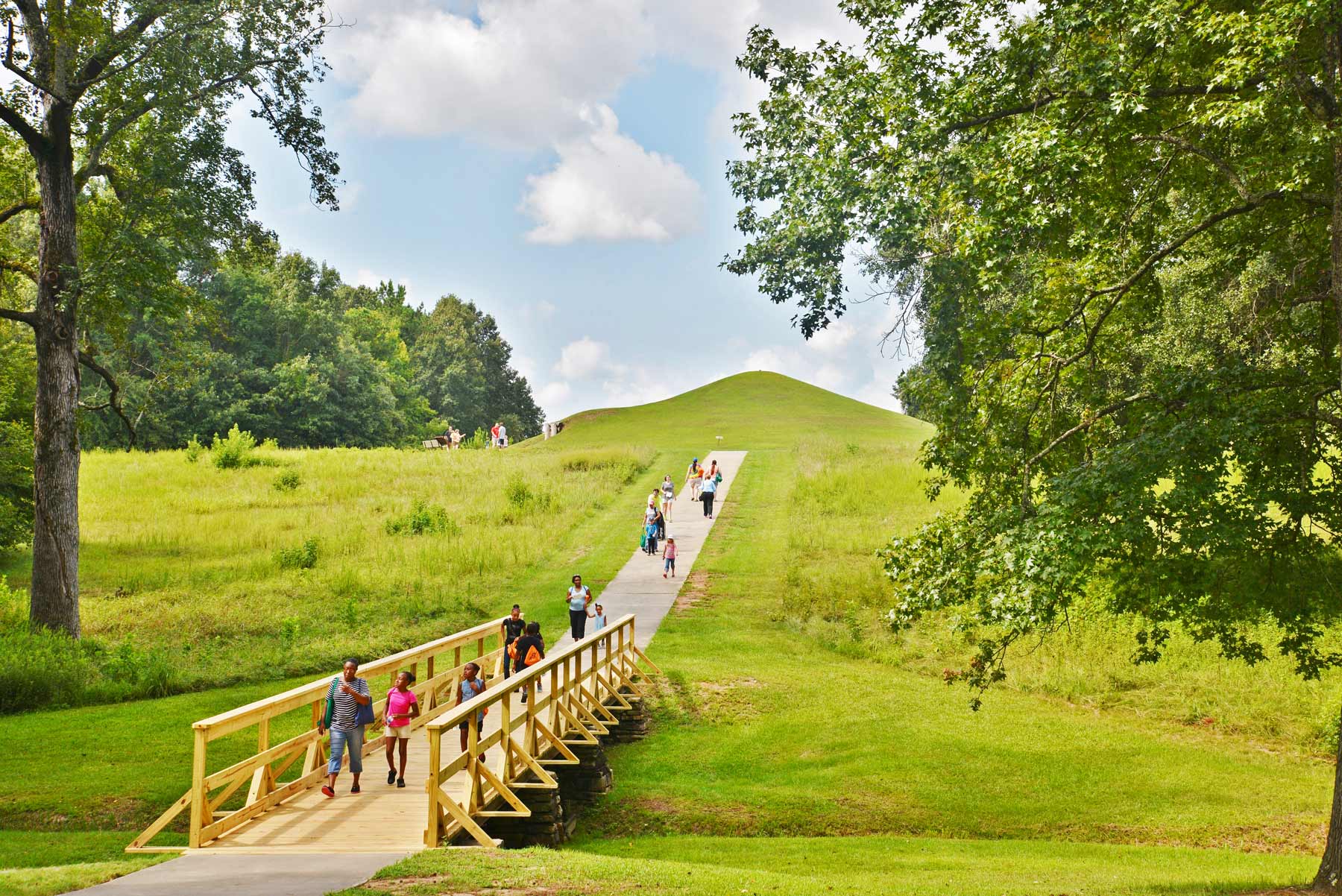
Things To Do
- Visit the Visitor Center: The park’s Visitor Center has exhibits and displays that offer an overview of the history and culture of the Native Americans who lived in the area for thousands of years. You can watch a short film about the park’s history and browse through the exhibits to learn about the different periods of Native American history at the site.
- Explore the Mounds: There are several mounds in the park that were built by the Native Americans who lived here. The largest mound, the Great Temple Mound, stands 56 feet tall and covers over 3 acres. You can climb to the top of the mound for a great view of the surrounding area.
- Take a Guided Tour: The park offers guided tours that are led by rangers or volunteer guides. The tours provide more in-depth information about the history and culture of the Native Americans who lived in the area.
- Hiking: The park has several hiking trails that allow you to explore the natural beauty of the park. The most popular trail is the Ocmulgee River Trail, which takes you along the river and through a hardwood forest.
- Attend Special Events: The park hosts special events throughout the year, including the Ocmulgee Indian Celebration, which is held annually in September. The celebration features Native American music, dance, storytelling, and crafts.
- Picnic: The park has several picnic areas where you can enjoy a meal surrounded by the beauty of the park.
- Photography: The park offers many opportunities for photography, whether you’re interested in capturing the natural beauty of the park or the archaeological remains of the Native Americans who lived here.

8. College Football Hall of Fame
If you’re a sports fan than you’ll love our next Georgia landmark. It’s the College Football Hall of Fame.
The College Football Hall of Fame is a museum located in Atlanta, Georgia. It celebrates the history and traditions of college football. The museum was founded in 1951 and was originally located in South Bend, Indiana, before moving to its current location in Atlanta in 2014.
The museum features a wide range of exhibits that showcase the history of college football, including interactive displays, memorabilia, and artifacts from some of the sport’s most legendary teams and players. Visitors can explore exhibits that cover everything from the early days of college football to the modern era, including displays on famous rivalries, iconic games, and historic moments in the sport’s history.

It Features Some Amazing Exhibits
One of the most popular exhibits at the College Football Hall of Fame is the Hall of Fame Gallery, which features bronze busts of every player and coach who has been inducted into the College Football Hall of Fame. The gallery is a tribute to the sport’s greatest players and coaches, and visitors can learn about their accomplishments and contributions to the game.
The museum also features a variety of interactive exhibits that allow visitors to test their skills and knowledge of the game. These include a 45-yard indoor football field, where visitors can throw passes and run drills, as well as a virtual reality experience that simulates the sights and sounds of game day.
Since moving to Atlanta, the College Football Hall of Fame has become a popular destination for sports fans and tourists alike. Its interactive exhibits and unique collections make it a one-of-a-kind experience for anyone who loves college football or is interested in the history of this beloved American sport.

7. Atlanta Botanical Garden
Our next Georgia landmark features renowned plant collections, beautiful displays and spectacular exhibitions. At #7 on our list of the Best Georgia Landmarks is the Atlanta Botanical Garden.
The Atlanta Botanical Garden was established in 1976 as the DeKalb County Botanical Garden, and was originally located in the Druid Hills neighborhood of Atlanta. In 1985, the garden was moved to its current location in Midtown Atlanta, where it now covers 30 acres.
The garden was created as a collaboration between the Atlanta Botanical Garden Inc. and the City of Atlanta, and was designed to serve as a center for education, conservation, and research.
Over the years, the garden has expanded to include a wide range of gardens and collections, including: a Children’s Garden, a Tropical Rotunda, a Japanese Garden, and the Canopy Walk, a walkway suspended 40 feet above the ground that allows visitors to walk among the treetops.

Atlanta Botanical Garden | Courtesy of Wikimedia Commons
The Garden Has Opened Some Amazing Exhibits
The garden opened the Fuqua Orchid Center in 1999. It’s a state-of-the-art orchid display and research facility. In 2004, the garden opened the Gardenhouse, a LEED-certified building that serves as an event space and a showcase for sustainable design.
In 2010, the garden opened the Edible Garden, a 2.5-acre garden that demonstrates sustainable gardening techniques and showcases a variety of fruits, vegetables, and herbs.
The Atlanta Botanical Garden has become one of Atlanta’s most popular attractions, drawing more than 500,000 visitors each year. In addition to its gardens and collections, the garden hosts a variety of special events throughout the year, including concerts, festivals, and seasonal celebrations.
The garden also offers a range of educational programs and classes for adults and children, as well as research and conservation initiatives aimed at preserving endangered plant species.
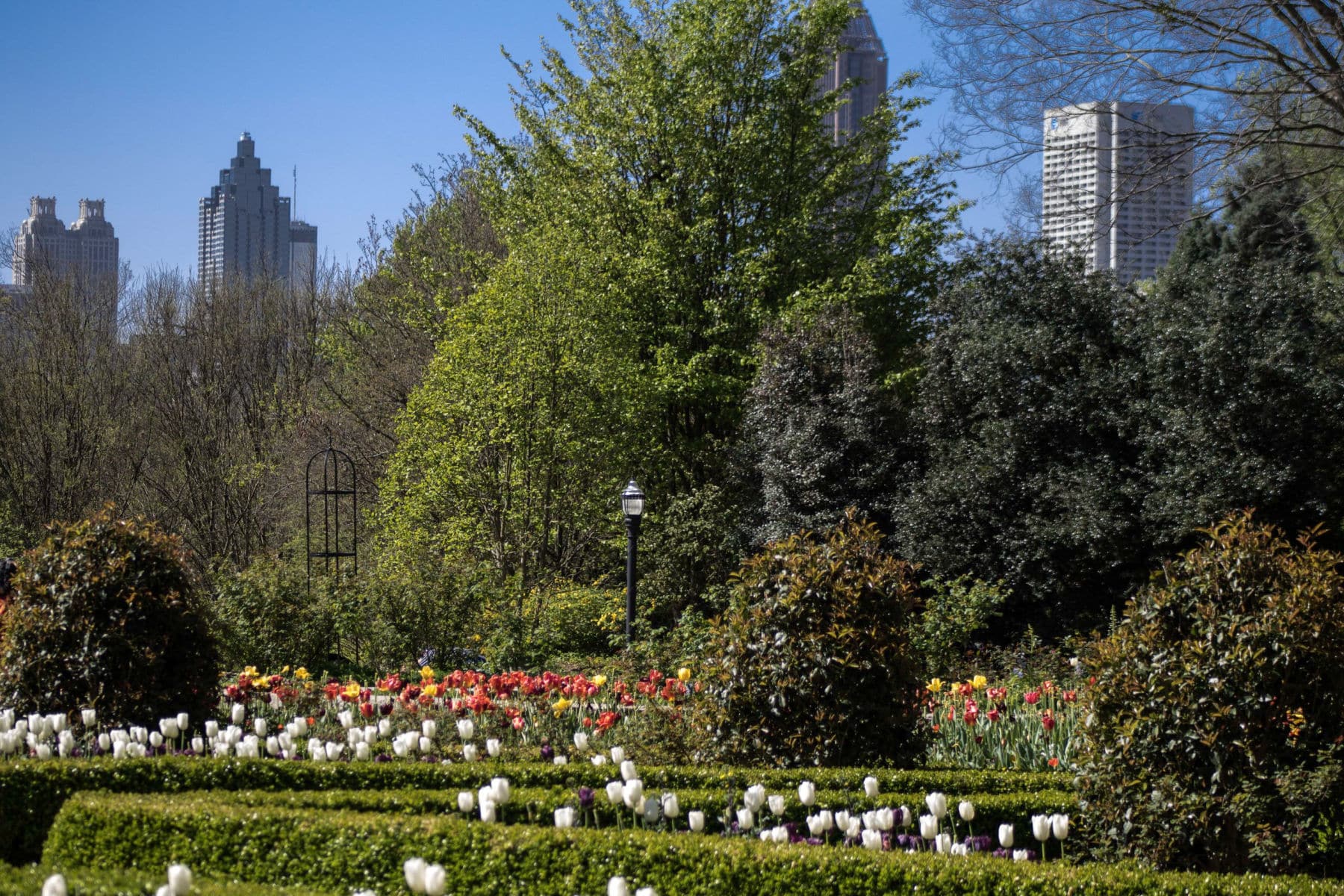
6. Fort Pulaski National Monument
Our next Georgia landmark was ranked one of the “most spectacular harbor defense structures” in the United States during the Civil War era. At #6 on our list of the Best Georgia Landmarks is Fort Pulaski National Monument.
The Fort Pulaski National Monument is located on Cockspur Island between Tybee Island and Savannah.
The fort was originally built after the War of 1812 when President James Madison ordered a new series of coastal defenses to protect the United States against future invasions.
Interestingly, the fort’s construction began in 1829 under the direction of Major General Babcock and a recent West Point graduate by the name of Robert E. Lee.
Lee was a young lieutenant at the time who would distinguish himself in the Mexican American War before moving on to even greater accomplishments in the American Civil War.
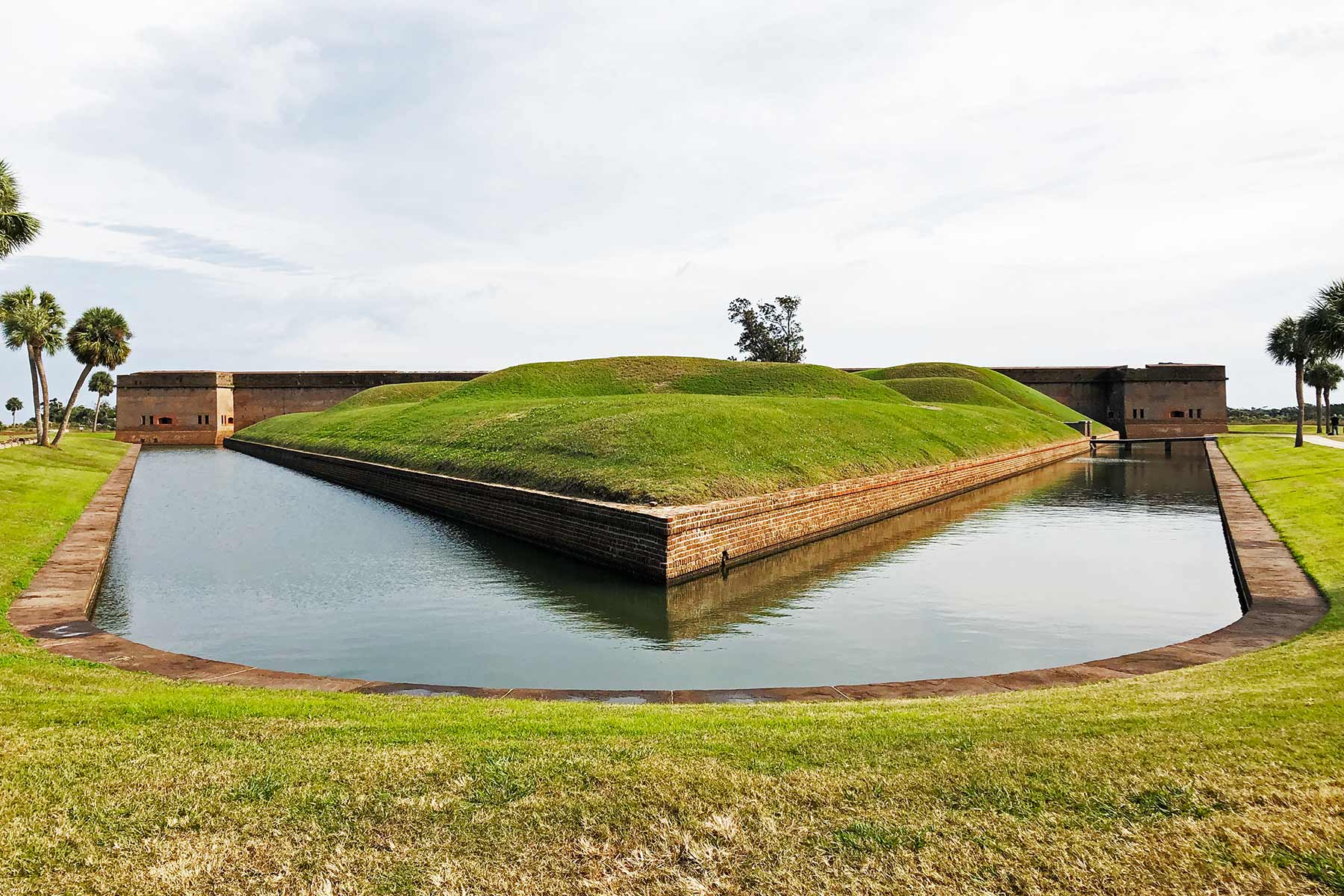
Fort Pulaski in the Civil War
The fort figured prominently during the Civil War. The only battle at Fort Pulaski occurred on April 10th & 11th, 1862, between Union forces on Tybee Island and Confederate troops inside the fort. Union forces occupied the fort beginning in April of 1862.
It was used as a place where the Union tested new weaponry including a rifled canon. The fort also held Confederate prisoners of war.
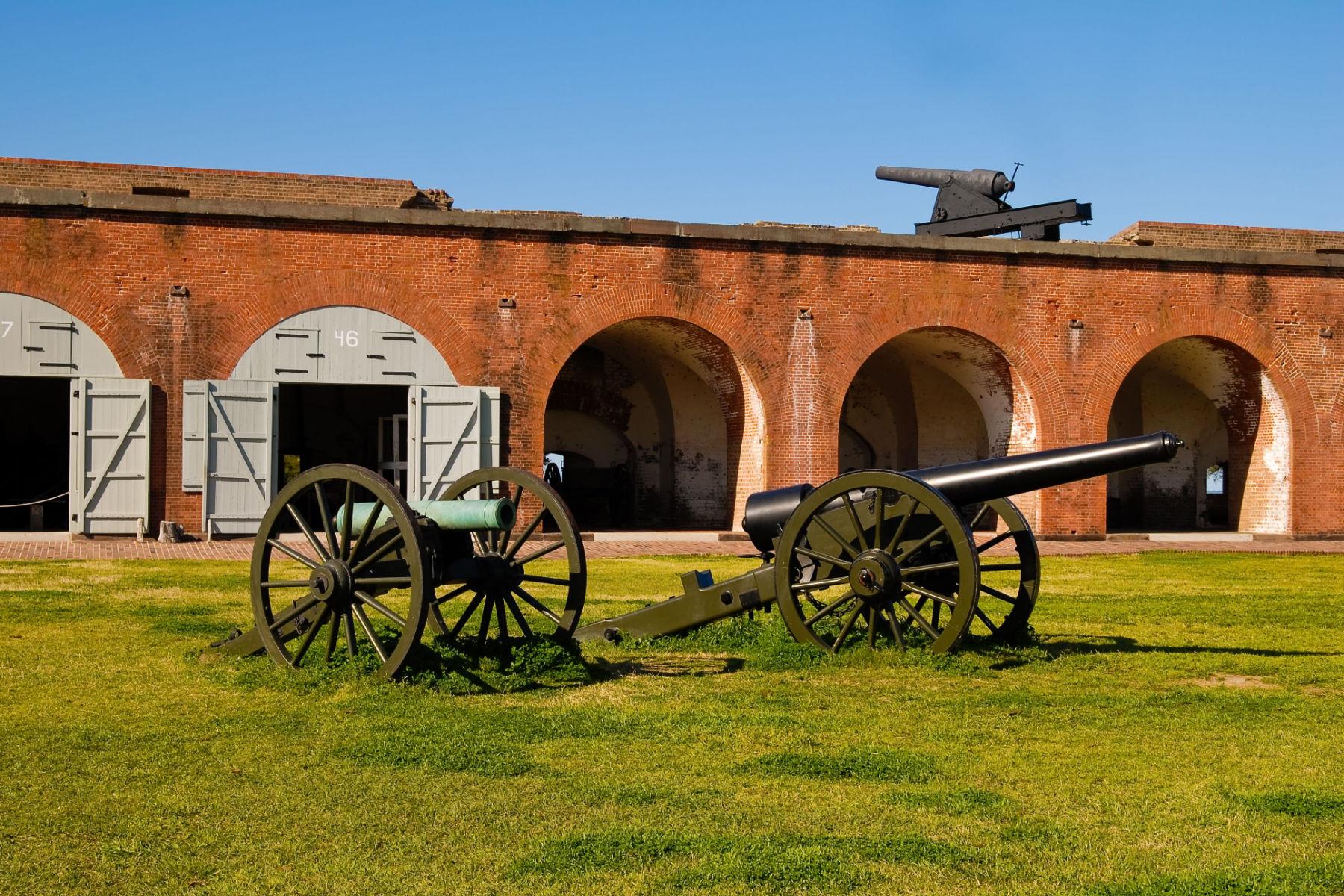
Things To Do At Fort Pulaski
- Explore the fort: Take a self-guided tour of the fort to learn about its history and construction. You can also participate in guided tours led by park rangers to gain a deeper understanding of the fort’s importance.
- Attend a ranger program: Join a ranger-led program to learn about the history of the fort and the role it played in the Civil War. The programs may include talks, walks, and demonstrations.
- Walk the trails: Fort Pulaski National Monument has several hiking trails that offer beautiful views of the surrounding area. The North Pier Trail and Lighthouse Overlook Trail are two popular options.
- Picnic: Bring a picnic and enjoy the scenic views of the fort and the surrounding landscape. The picnic area is located near the visitor center.
- Fishing: Fishing is allowed in the surrounding waters of the park. You can bring your own gear or rent it from the visitor center.
- Birdwatching: Fort Pulaski National Monument is home to a variety of bird species, including eagles, ospreys, and herons. Bring your binoculars and see how many different birds you can spot.
- Visit Cockspur Island Lighthouse: Located just outside of the fort, this historic lighthouse was built in 1856 and is a popular spot for photos.
- Watch a cannon firing: Periodically throughout the year, the park offers demonstrations of the fort’s cannons being fired. Check the park’s website or ask a ranger for details.
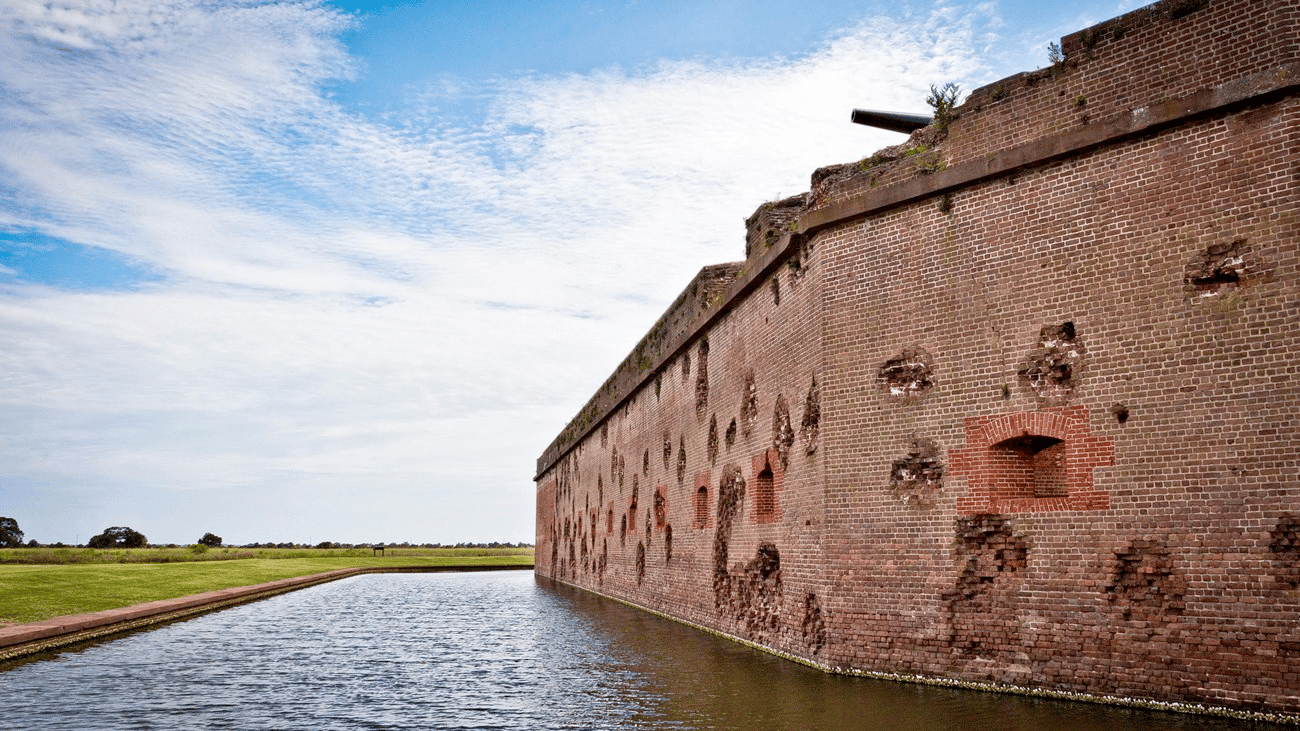
Top 5 Georgia Landmarks
5. Stone Mountain Park
We’re on to out Top 5 Georgia landmarks. Our next Georgia landmark is known for its natural park areas surrounding a mountain with a bas-relief rock carving on its side. At #5 on our list of the Best Georgia Landmarks is Stone Mountain Park.
Stone Mountain Park covers over 3,000 acres and features a variety of outdoor activities, attractions, and events.
The history of the park dates back to the early 19th century, when the area was settled by European immigrants. In the 1820s, the mountain was identified as a prime location for quarrying granite, and a number of quarries were established in the area. The granite from Stone Mountain was used in a variety of construction projects throughout the United States, including the Georgia State Capitol building.
In the early 20th century, the mountain became a popular destination for tourists and outdoor enthusiasts. In 1915, the Stone Mountain Confederate Memorial Association was formed with the goal of creating a memorial to the Confederacy on the mountain. Over the next several decades, the association raised funds to carve a massive relief sculpture of Confederate leaders into the side of the mountain.

The Confederate Mount Rushmore
The carving, which depicts Confederate President Jefferson Davis, General Robert E. Lee, and General Thomas “Stonewall” Jackson, was completed in 1972 after several interruptions due to funding and disputes over the content of the sculpture.
In addition to the sculpture, Stone Mountain Park also features a variety of other attractions, including a 5-mile hiking trail to the top of the mountain, a sky tram, a historic village, and a golf course. The park has also become known for its laser light shows, which are projected onto the side of the mountain during the summer months.
Today, Stone Mountain Park is one of the most visited tourist destinations in the state of Georgia, attracting over 4 million visitors each year. The park continues to evolve and expand, with new attractions and events added on a regular basis.
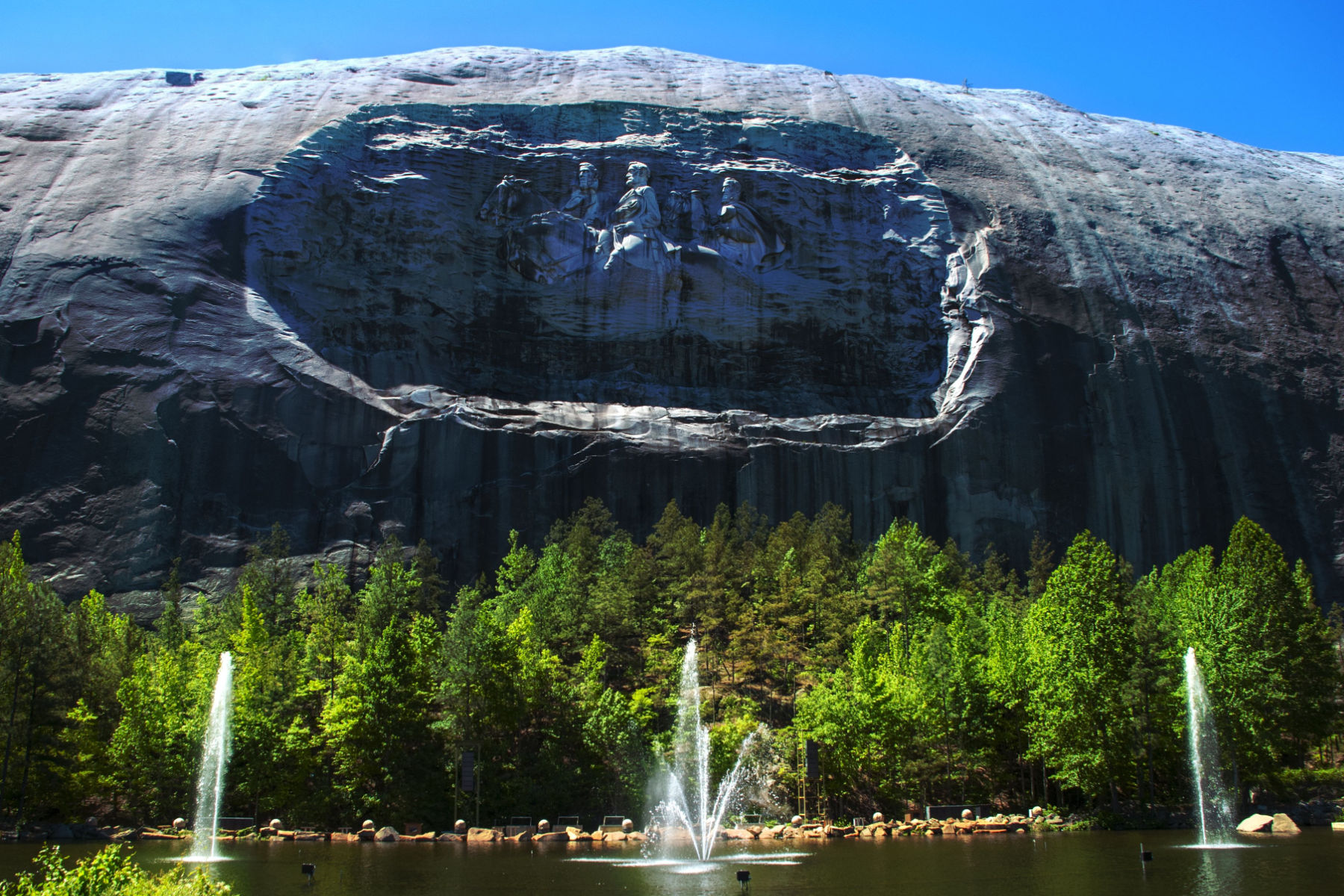
4. Chickamauga & Chattanooga National Military Park
We’re on to the “Final Four” on our list of the Best Georgia Landmarks. And, at #4, we offer you not one, but two Civil War battles. Welcome to Chickamauga & Chattanooga National Military Park!
Chickamauga and Chattanooga National Military Park is a historic site located in northwest Georgia and eastern Tennessee. The park commemorates two major battles of the American Civil War: the Battle of Chickamauga, fought on September 19-20, 1863, and the Chattanooga Campaign, fought from September to November of that same year.
The Battle of Chickamauga was one of the bloodiest battles of the Civil War, resulting in over 34,000 casualties.
Confederate General Braxton Bragg’s Army of Tennessee attacked Union General William Rosecrans’ Army of the Cumberland and pushed them back into Chattanooga, Tennessee. The Union army was able to hold the city, but only barely, and the Confederate victory at Chickamauga allowed them to lay siege to the city for the next two months.
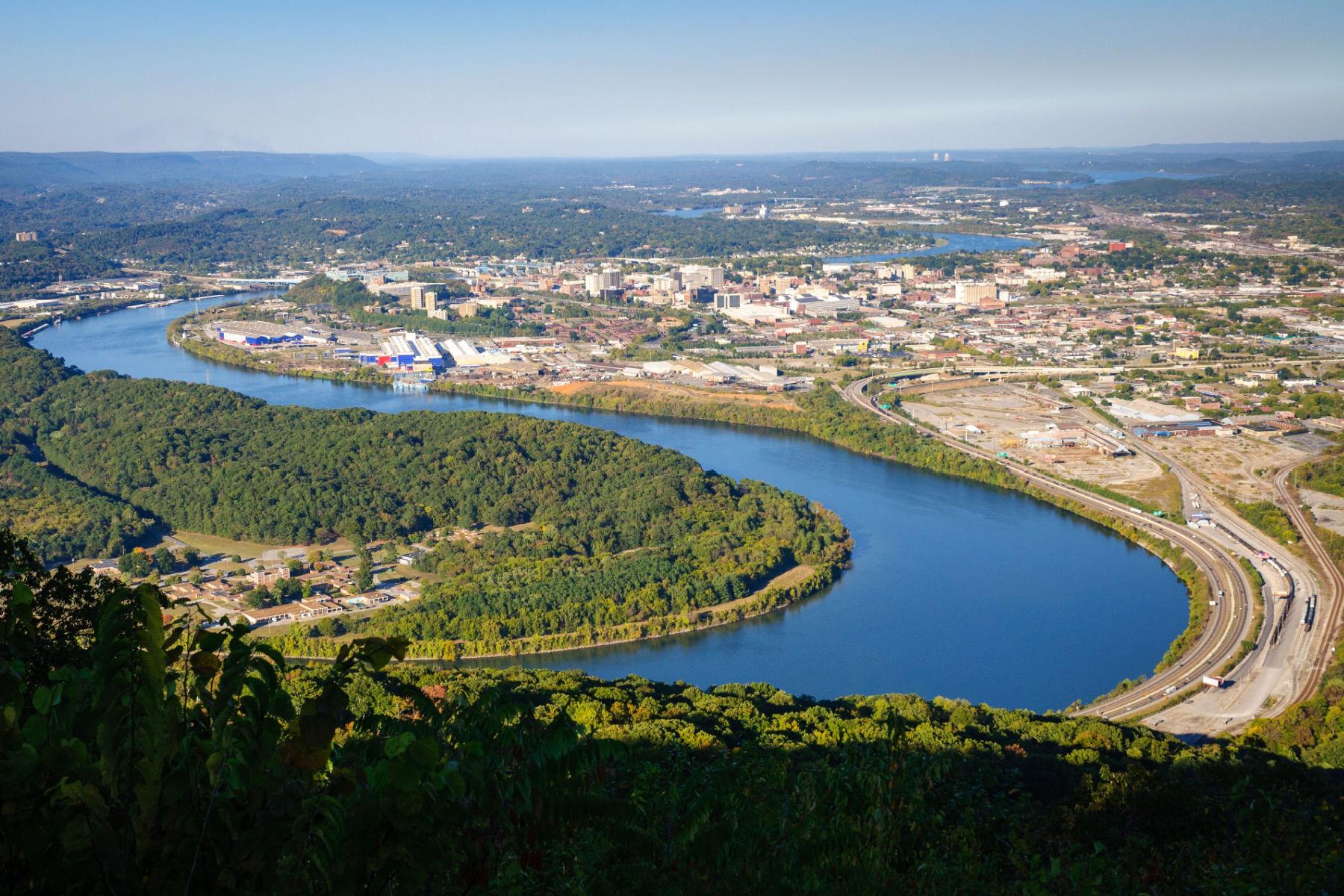
Grant Turns The Tide Of Battle
The Chattanooga Campaign began in late September 1863, when Union General Ulysses S. Grant arrived to take command of the Union forces in the region.
He immediately began to reorganize and reinforce the army, and by late November, he had pushed the Confederates back to the Georgia border. The Union victory at Chattanooga opened up the Deep South to Union forces and helped to turn the tide of the war in their favor.
After the war, the Chickamauga and Chattanooga battlefields were established as national military parks, the first of their kind in the United States.
The park was officially dedicated in 1895, and over the years, additional land and monuments were added to the park. Today, the park encompasses over 9,000 acres and includes a museum, visitor center, and over 100 miles of hiking trails.

Things To Do
- Take a guided tour: The park offers a variety of guided tours, including walking tours, ranger-led tours, and bus tours. These tours provide a deeper understanding of the history of the park and the battles that took place there.
- Visit the museum and visitor center: The park’s museum and visitor center provide a wealth of information about the history of the park and the Civil War. Exhibits include artifacts, photographs, and interactive displays.
- Hike the trails: The park offers over 100 miles of hiking trails, ranging from easy walks to challenging hikes. The trails take visitors through the historic battlefields and offer beautiful views of the surrounding landscape.
- Attend a living history program: The park hosts a variety of living history programs throughout the year, where visitors can see reenactors in period dress demonstrating the daily life of Civil War soldiers.
- Explore historic sites: The park is home to a number of historic sites, including Snodgrass Hill, where a significant portion of the Battle of Chickamauga was fought, and Point Park, which offers panoramic views of Chattanooga and the surrounding area.
- Attend special events: The park hosts a variety of special events throughout the year, including concerts, festivals, and reenactments. Check the park’s website for upcoming events.
- Picnic: The park has several picnic areas where visitors can enjoy a meal while taking in the beautiful scenery.
- Birdwatching: The park is home to a variety of bird species, including eagles, hawks, and woodpeckers. Bring your binoculars and see how many different birds you can spot.
- Horseback riding: The park offers several miles of horseback riding trails, allowing visitors to explore the park from a different perspective.
3. Roosevelt’s Little White House At Warm Springs
We’re on to the final three and you’re going to be impressed. At #3, we turn our attention from the bloodiest conflict in American history to one of the most consequential American presidents of all time.
At the The Little White House At Warm Springs you can learn the story of the only President of the United States to be elected more than twice.
Franklin D. Roosevelt led the nation through the twin crises of the Great Depression and World War Two. In the process, he transformed the role of the federal government.
The programs unleashed by FDR’s New Deal sought to insure that the economic, social, and political benefits of American capitalism were distributed more equally among America’s large and diverse populace.
FDR also transformed the American presidency. Under his leadership, the President’s duties grew to encompass not only those of the chief executive—as implementer of policy—but also chief legislator—as drafter of policy. He greatly increased both the powers and the responsibilities of the office.
If there is an overarching lesson from the life and achievements of Franklin Delano Roosevelt which is applicable to our own times then perhaps it is this: An enlightened and progressive government should use its resources not just to alleviate need but to help people gain confidence that they have something to contribute to the greater good.

Things To Do
- Take a guided tour: Visitors can take a guided tour of the Little White House, which includes the President’s living quarters, dining room, and a museum displaying artifacts from Roosevelt’s life and presidency.
- Visit the FDR Memorial Museum: The FDR Memorial Museum is located on the grounds of the Little White House and offers a glimpse into the life and times of Franklin D. Roosevelt, including his New Deal policies and his leadership during World War II.
- Enjoy the park and gardens: The Little White House is situated on beautiful grounds, featuring gardens, walking trails, and a spring-fed pool that Roosevelt used for therapy. Visitors can enjoy a picnic, take a stroll, or simply relax in this serene setting.
- Attend special events: The Little White House hosts special events throughout the year, such as reenactments, holiday celebrations, and concerts. Check the website for a schedule of upcoming events.
- Explore the surrounding area: Warm Springs is surrounded by beautiful natural areas, including the Pine Mountain Trail and the F.D. Roosevelt State Park. Visitors can explore these areas on foot, by bike, or on horseback.

2. Martin Luther King Jr. National Historical Park
The final two historic sites have at least two things in common. Both celebrate men who were born and raised in Georgia. And both of these men were awarded the Nobel Prize for Peace.
First up is at #2 is the Martin Luther King Jr. National Historical Park. But before turning our attention to the site, it’s important to review the legacy of the man.
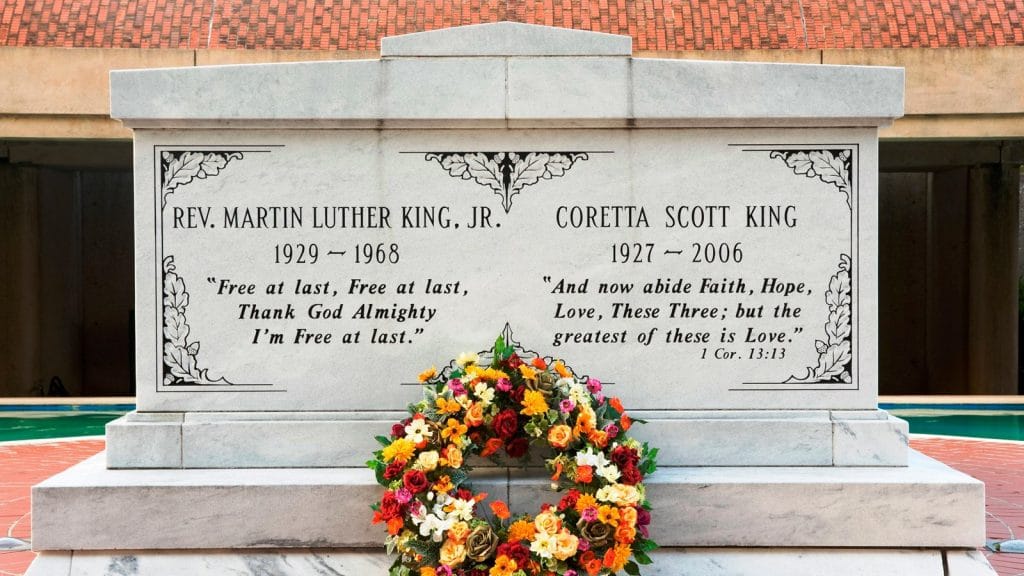
Martin Luther King, Jr.
Martin Luther King Jr. (1929-1968) was an American Baptist minister, activist, and leader in the American Civil Rights Movement. He is best known for his role in advancing civil rights using nonviolent civil disobedience based on his Christian beliefs.
King was born in Atlanta, Georgia and educated at Morehouse College, Crozer Theological Seminary, and Boston University, where he earned a Ph.D. in systematic theology. He became a Baptist minister and began working for civil rights in the 1950s.
King played a key role in the Montgomery Bus Boycott in 1955-1956, which led to the desegregation of the city’s bus system.
He went on to lead a number of other campaigns, including the Birmingham campaign and the March on Washington for Jobs and Freedom, where he delivered his famous “I Have a Dream” speech in 1963.
King’s leadership and activism helped to secure the passage of several important pieces of civil rights legislation, including the Civil Rights Act of 1964 and the Voting Rights Act of 1965.
King’s commitment to nonviolent protest and his message of equality and justice for all have made him an enduring symbol of the American Civil Rights Movement. In recognition of this fact, he was awarded the Nobel Peace Prize in 1964 for his work towards social justice and civil rights.
Tragically, King was assassinated in Memphis, Tennessee on April 4, 1968.

“I have decided to stick with love. Hate is too great a burden to bear.”
-dr. martin luther king, jr.
Things To See
The Martin Luther King Jr. National Historical Park is a national park that preserves and commemorates the life and legacy of civil rights leader Martin Luther King Jr.
The park includes several buildings and sites that are significant to Dr. King’s life and work, including his boyhood home, the original Ebenezer Baptist Church, where he and his father both served as pastors, and The Martin Luther King Jr. Center for Nonviolent Social Change, also known as “The King Center”.
The National Park Service has restored many of the neighboring buildings to reflect their appearances in the 1930s and 1940s, the period of time when Dr. King grew up there.
This allows visitors to step into that era and imagine themselves walking with the residents, hearing the noise of this lively neighborhood and experiencing what life was like in those tumultuous times.
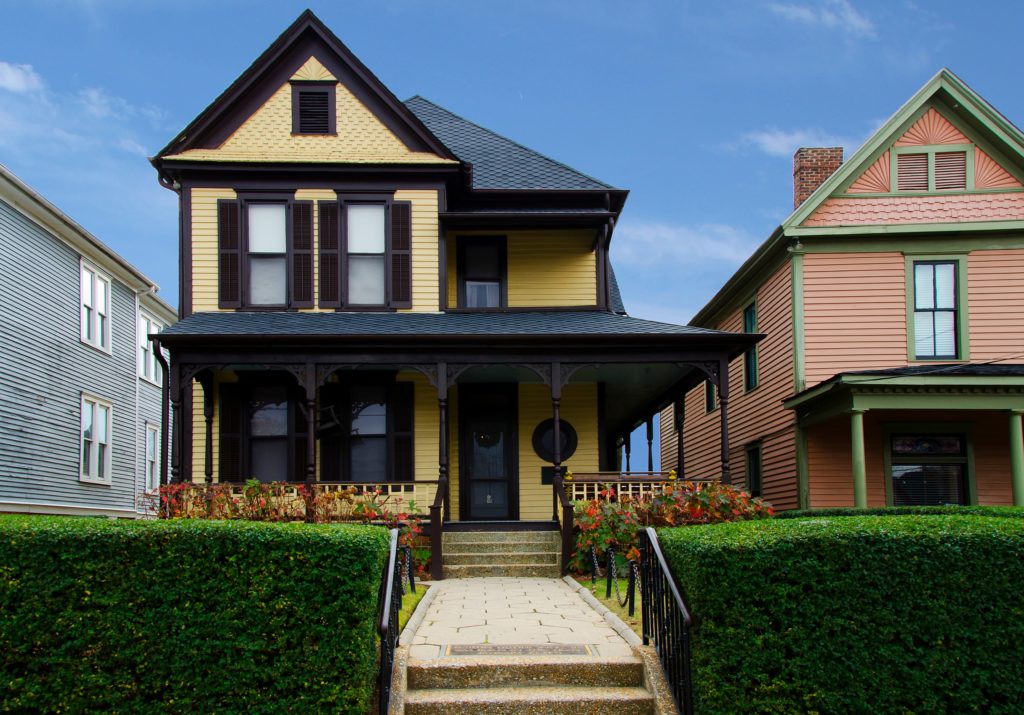
Civil Rights Walk Of Fame
The park also includes the International Civil Rights Walk of Fame, where visitors can see the footprints and signatures of civil rights leaders from around the world, and the Martin Luther King Jr. Memorial Garden, a peaceful place for reflection and contemplation.
The park offers a variety of educational programs and events throughout the year, including guided tours, lectures, and workshops, which help visitors to understand the significance of Dr. King’s life and work and the ongoing struggle for civil rights and social justice.
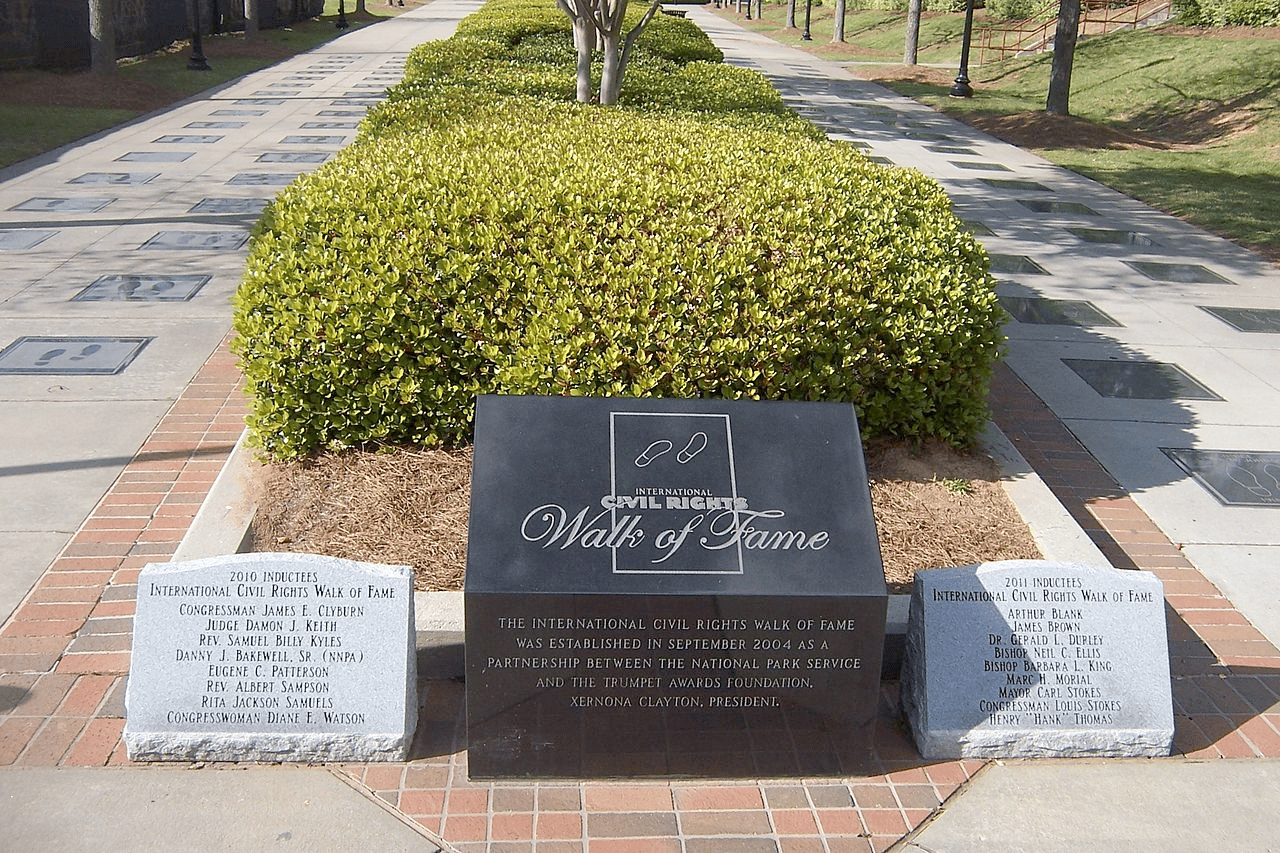
1. Jimmy Carter National Historical Park
We believe that we’ve saved the best for last. More Than Just Parks #1 Georgia Landmark celebrates the only Georgian to be elected President of the United States. It’s the Jimmy Carter National Historical Park!
The Jimmy Carter National Historical Park celebrates the man who has been universally acclaimed as the most successful former president in history.
Carter, however, was not only a successful ex-president. History is finally catching up with the man who today is recognized as having been decades ahead of his time.

Decades Ahead Of His Time
Though from a segregated and racist background in Georgia, Carter pushed for affirmative action and prioritized diversity among judicial nominees, including the appointment of Ruth Bader Ginsburg and Amalya Lyle Kearse.
He startled the globe by personally brokering the critical Middle East peace treaty between Anwar Sadat and Menachem Begin at Camp David.
He ceded access to the Panama Canal, angering conservatives who thought he was giving away an American asset.
Through the Alaska National Interest Lands Conservation Act, he doubled the national park system and conserved over 100m acres of land – the most sweeping expansion of conserved land in American history.

Carter was right on asking us to drive less, to reduce our dependence on foreign oil, to focus on conservation and renewable energy. Not only was Carter’s vision a path not taken, it was a path mocked. Reagan removed the solar panels from the White House, politicized the environmental movement and painted it as a fringe endeavor.
-Megan Mayhew bergman, the guardian, decades ahead of his time: history catches up with visionary jimmy carter
Jimmy Carter’s Presidency Was Not What You Think
Regrettably, the political narrative surrounding President Carter in the aftermath of his 1980 defeat to Ronald Reagan has largely been shaped by his political adversaries. The reality, however, is quite different.
Kai Bird is a Pulitzer Prize-winning historian and journalist. He is the author of The Outlier: The Unfinished Presidency of Jimmy Carter.
Bird notes in a New York Times editorial that Carter was probably the most intelligent, hard-working and decent man to have occupied the Oval Office in the 20th century.
As Bird writes, “His [Carter’s] presidency is remembered, simplistically, as a failure, yet it was more consequential than most recall. He delivered the Camp David peace accords between Egypt and Israel, the SALT II arms control agreement, normalization of diplomatic and trade relations with China and immigration reform.”
“He made the principle of human rights a cornerstone of U.S. foreign policy, planting the seeds for the unraveling of the Cold War in Eastern Europe and Russia.”

The President Who Tried To Save The Planet
In an article which appeared in the Washington Post in February of 2023, the newspaper referred to the former president as: “Jimmy Carter, The President Who Tried To Save The Planet.”
The Post went on to note that: “Despite serving a single term, Jimmy Carter ranks as one of the most consequential U.S. presidents when it comes to environmentalism, according to historians, conservationists and several former federal officials.”
To Learn More About Carter’s Groundbreaking Work As A Conservationist & Environmentalist, check out the following articles by More Than Just Parks:
(1) Jimmy Carter Was The Greatest Conservation President
(2) 14 Reasons Why Jimmy Carter Is America’s Greenest President

Things To See & Do at The Jimmy Carter National Historical Park
- Visit the Jimmy Carter Boyhood Farm: This is the home where Jimmy Carter spent his early years, and it has been restored to its 1930s appearance. Visitors can tour the house and see the farm buildings, gardens, and the nearby pond.
- Walk the trails: The park has several trails that wind through the fields and forests around Plains. The trails range from easy walks to more challenging hikes and offer a chance to see wildlife and natural features such as swamps and wetlands.
- Explore the Plains High School Museum: This museum is located in the building that was formerly the Plains High School, where Jimmy Carter attended. It features exhibits on the history of the school and the community, including exhibits on the local African American community and the 1976 presidential campaign.
- Tour the Carter compound: This is the home where Jimmy and Rosalynn Carter have lived since they left the White House. Visitors can take a guided tour of the home and see the gardens and the former president’s woodworking shop.
- Attend special events: The park hosts a number of special events throughout the year, including a Christmas festival, a peanut festival, and a commemoration of the March 21, 1965 civil rights march from Selma, Alabama to Montgomery, Alabama.
- Visit the Visitors Center: The Visitors Center offers exhibits, films, and information about the park and the surrounding area. It also has a gift shop and a bookstore with books on Jimmy Carter’s life and presidency.

“I have one life and one chance to make it count for something… My faith demands that I do whatever I can, wherever I am, whenever I can, for as long as I can with whatever I have to try to make a difference.”
-Jimmy Carter
The Pattiz Brothers With The 39th President Of The United States
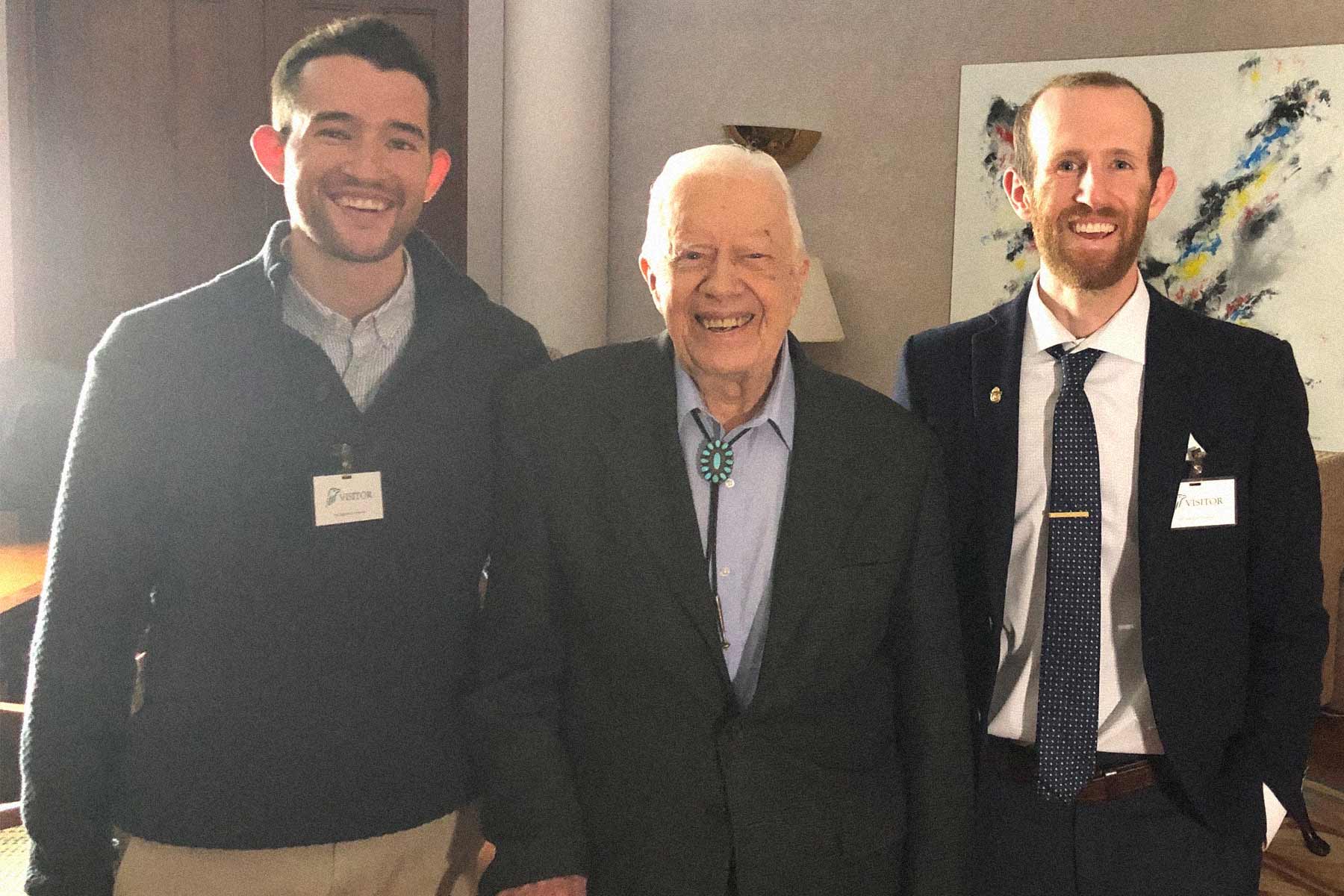
Learn About Our President Carter Film
Map Of Georgia Landmarks
List Of Georgia Landmarks
- Jimmy Carter National Historical Park
- Martin Luther King, Jr. National Historical Park
- Roosevelt’s Little White House At Warm Springs
- Chickamauga & Chattanooga National Military Park
- Stone Mountain Park
- Fort Pulaski National Monument
- Atlanta Botanical Garden
- College Football Hall of Fame
- Ocmulgee Mounds National Monument
- Andersonville National Historic Site
- Georgia Aquarium
- Kennesaw Mountain National Battlefield Park
- Centennial Olympic Park
- High Museum Of Art
- The Varsity
- Etowah Mounds
- Fort Frederica National Monument
- Jefferson Davis Memorial Historic Site
- Tybee Island Light Station & Museum
- Savannah Historic District
- Reynolds Mansion On Sapelo Island
- Pickett’s Mill Battlefield State Historic Site
- Tallulah Falls
- Georgia Capitol Museum
- Center For Puppetry Arts
Why Trust Us About Georgia Landmarks?
We’re Jim Pattiz and Will Pattiz, collectively known as the Pattiz Brothers and we absolutely LOVE the national parks.
You should probably know that we don’t just make this stuff up out of thin air. We’ve spent our entire adult lives exploring and filming America’s national parks and public lands.
We’ve worked with the National Park Service, the Department of Interior, USDA, U.S. Forest Service, and more for years creating films on important places and issues. Our work has been featured in leading publications all over the world and even some people outside of our immediate family call us experts on the national parks.
And, in 2018, our father – having spent a lifetime teaching history – joined us so that he could help us to tell the stories behind these amazing places.
Meet The Parks Brothers
We Hope You’ll Follow Our Journey

Our goal here at More Than Just Parks is to share the beauty of America’s national parks and public lands through stunning short films in an effort to get Americans and the world to see the true value in land conservation.
We hope you’ll follow our journey through the parks and help us to keep them the incredible places that they are. If you’re interested in joining the adventure then sign up below!
Related Links
What Is A National Park? To learn more about the difference between the various National Park Service designations check out our article that explains everything!
Civil War Sites: Top 10 Best Civil War Sites & Battlefields
Georgia National Parks: 12 AMAZING Georgia National Parks
Jimmy Carter: Jimmy Carter, Not Theodore Roosevelt, Was The Greatest Conservation President


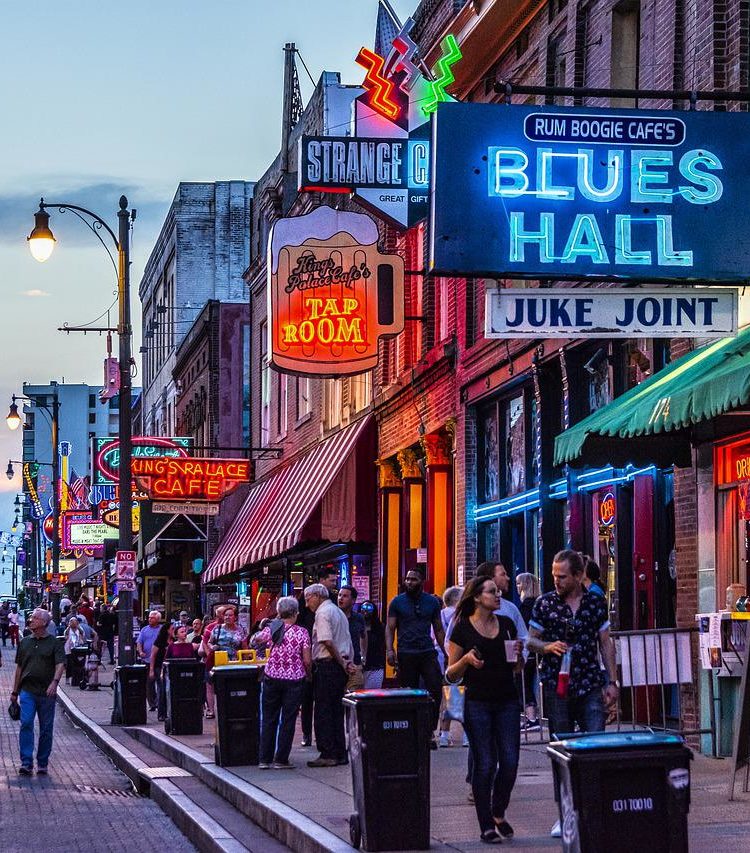
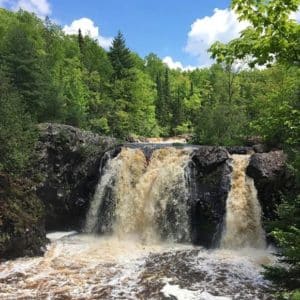

Leave a Reply